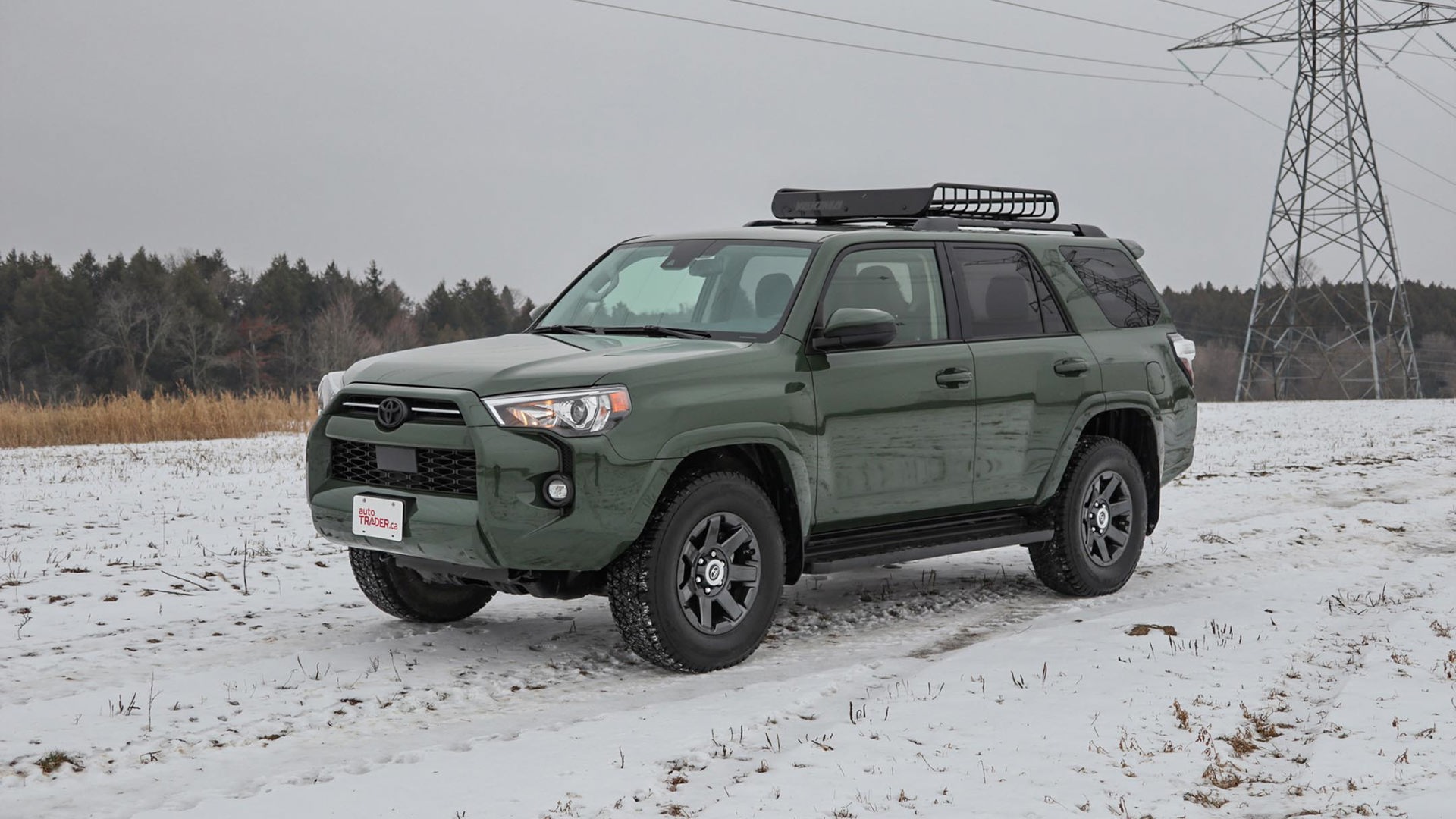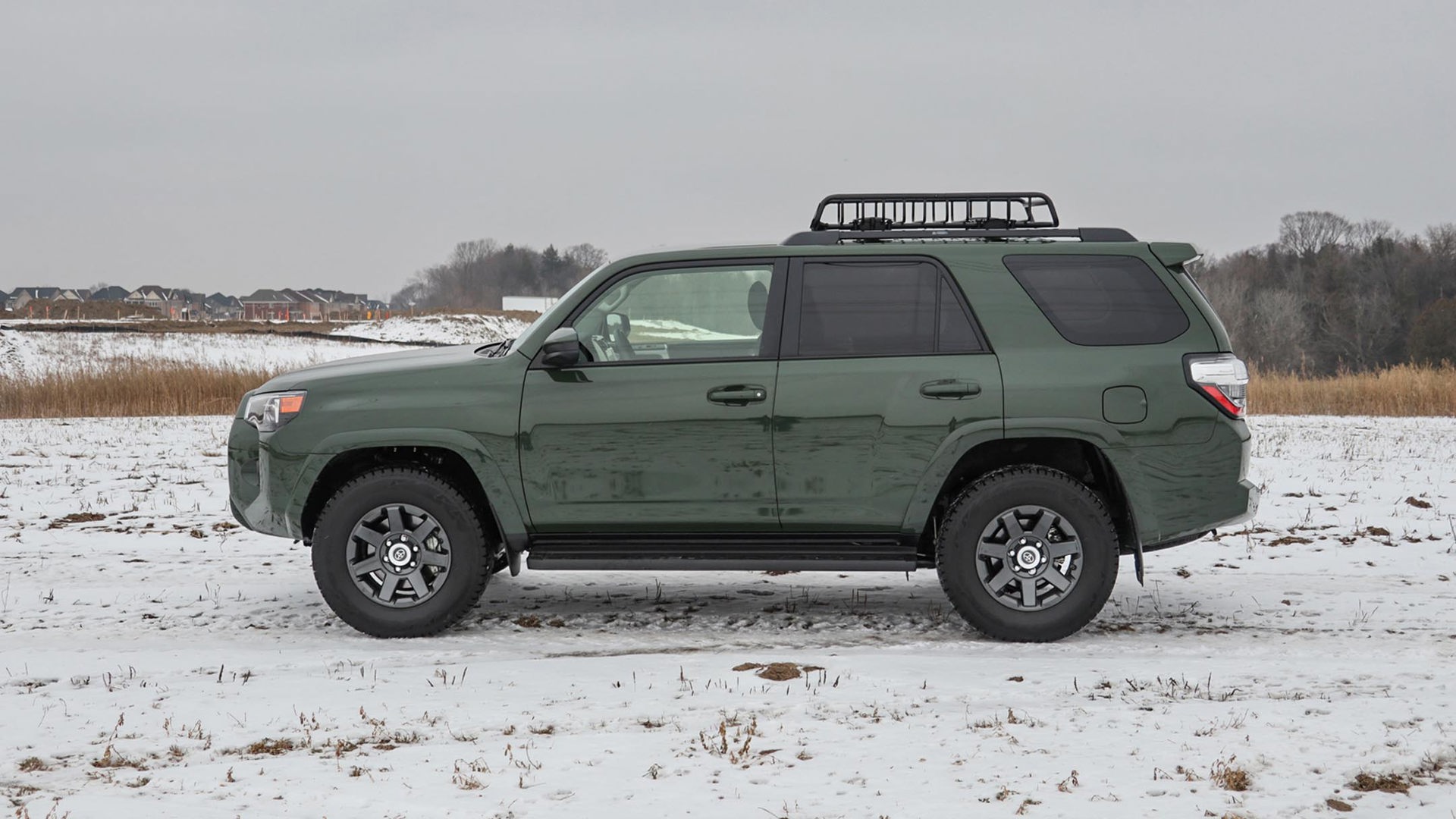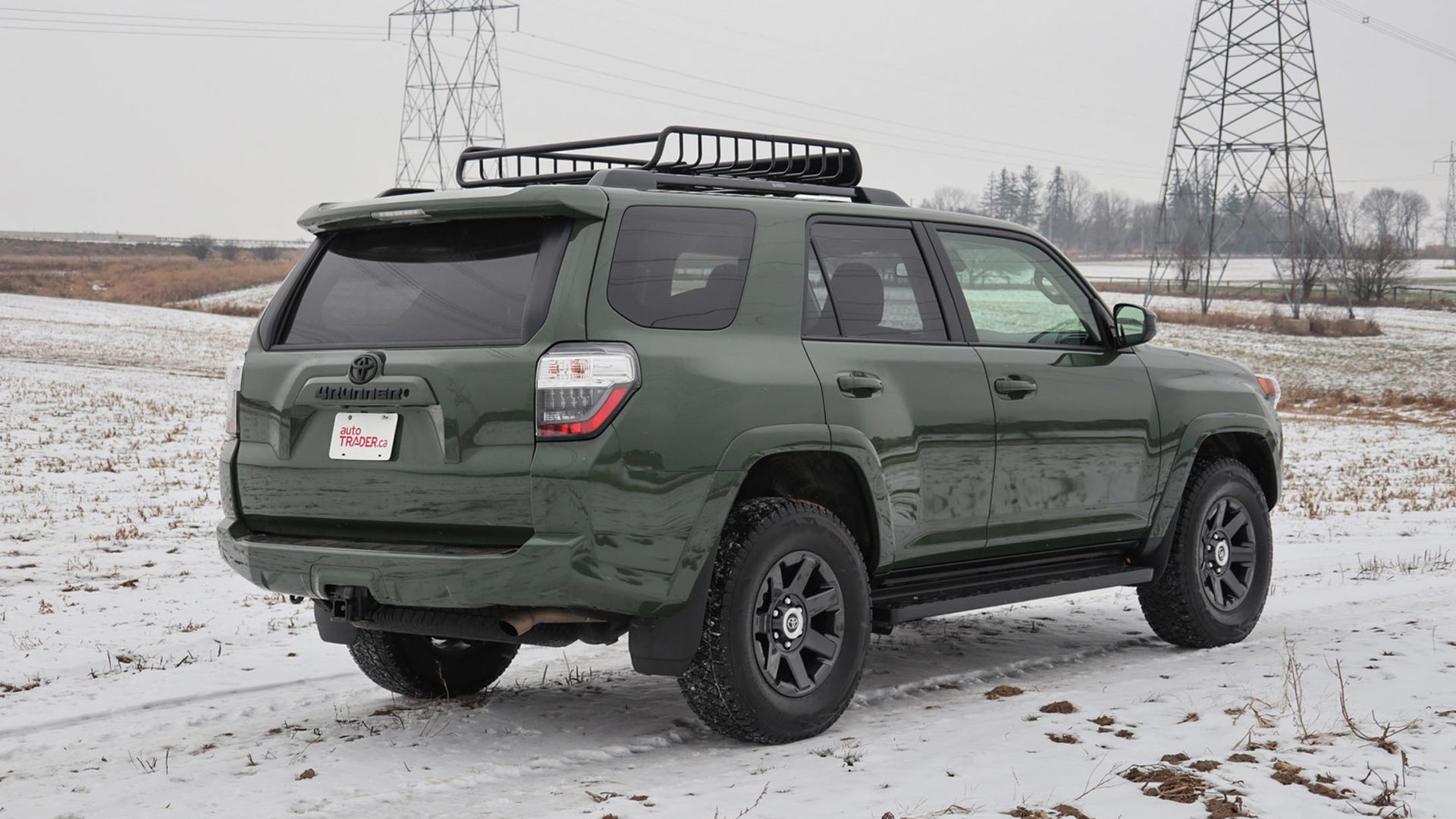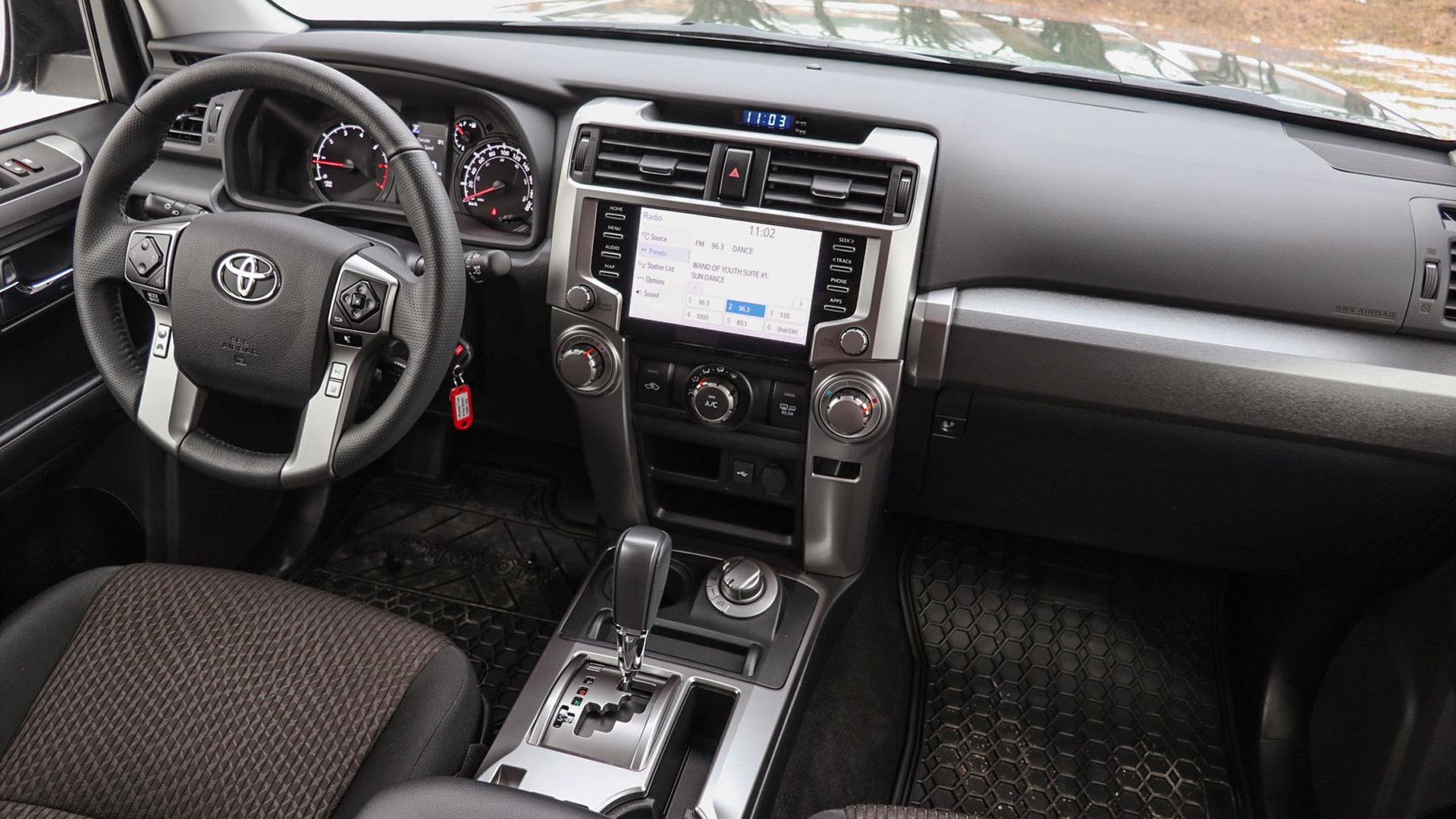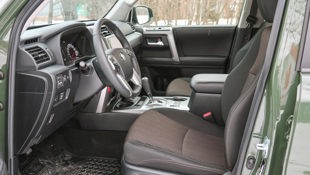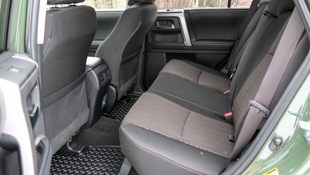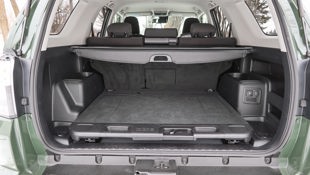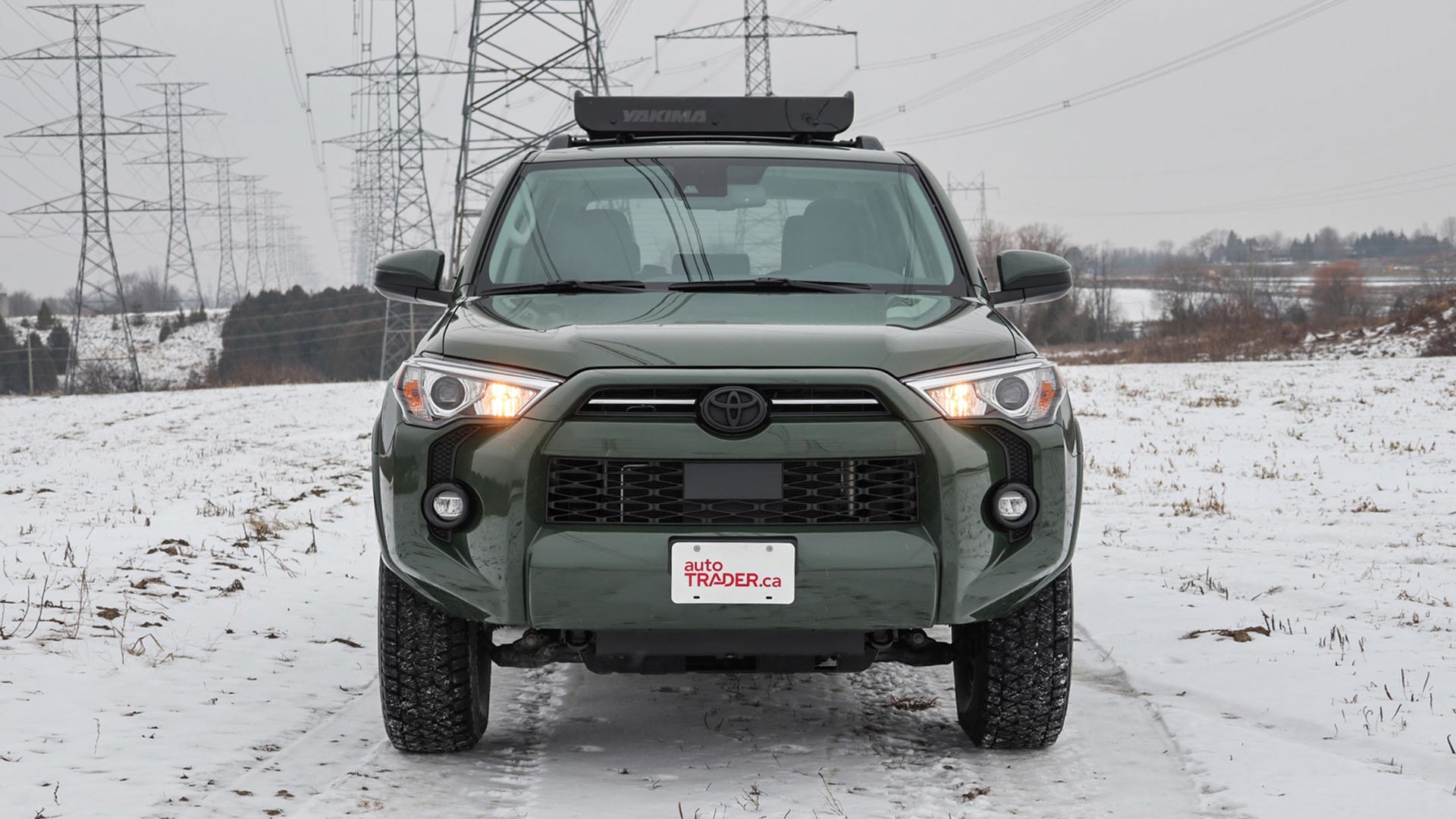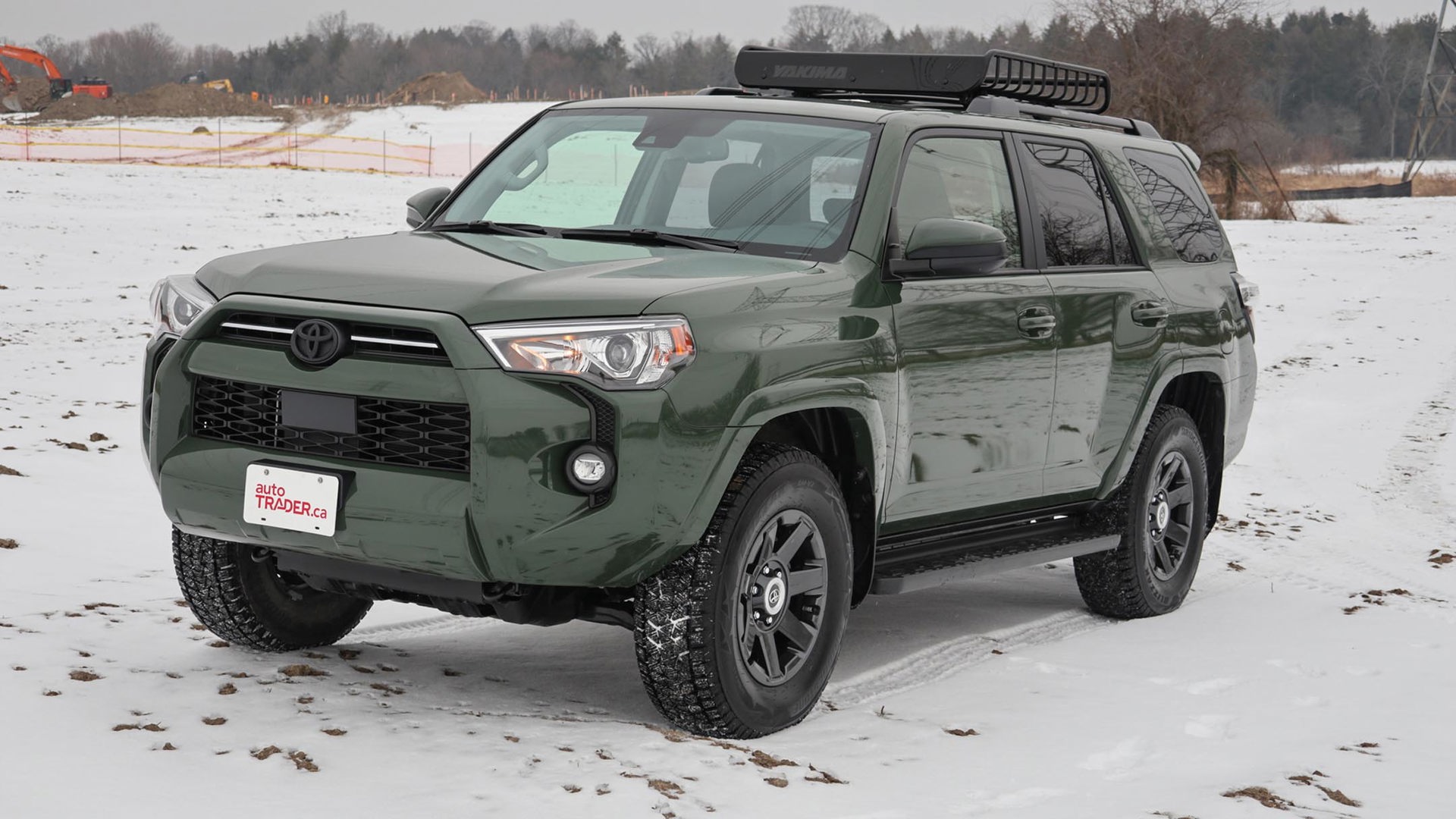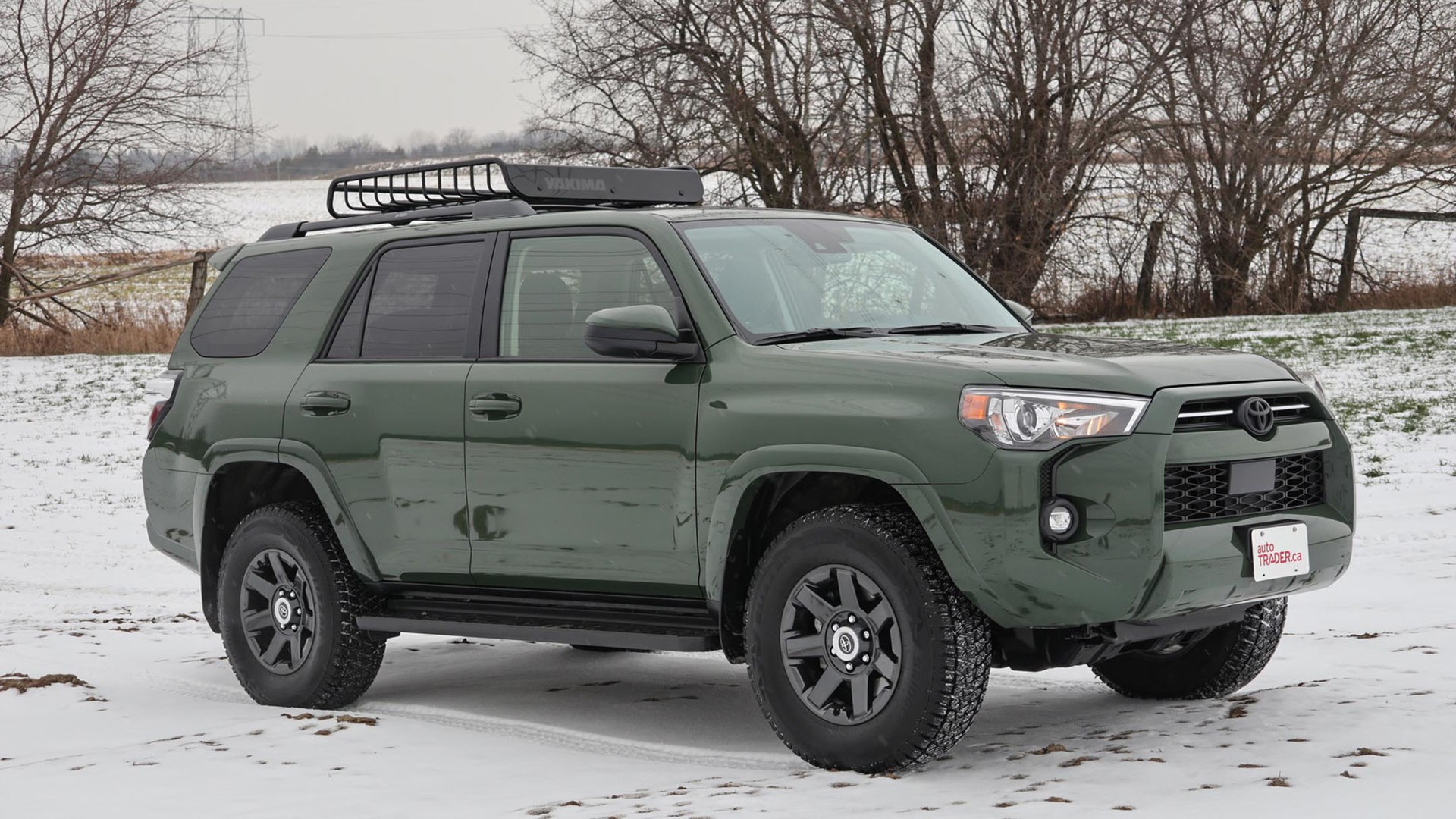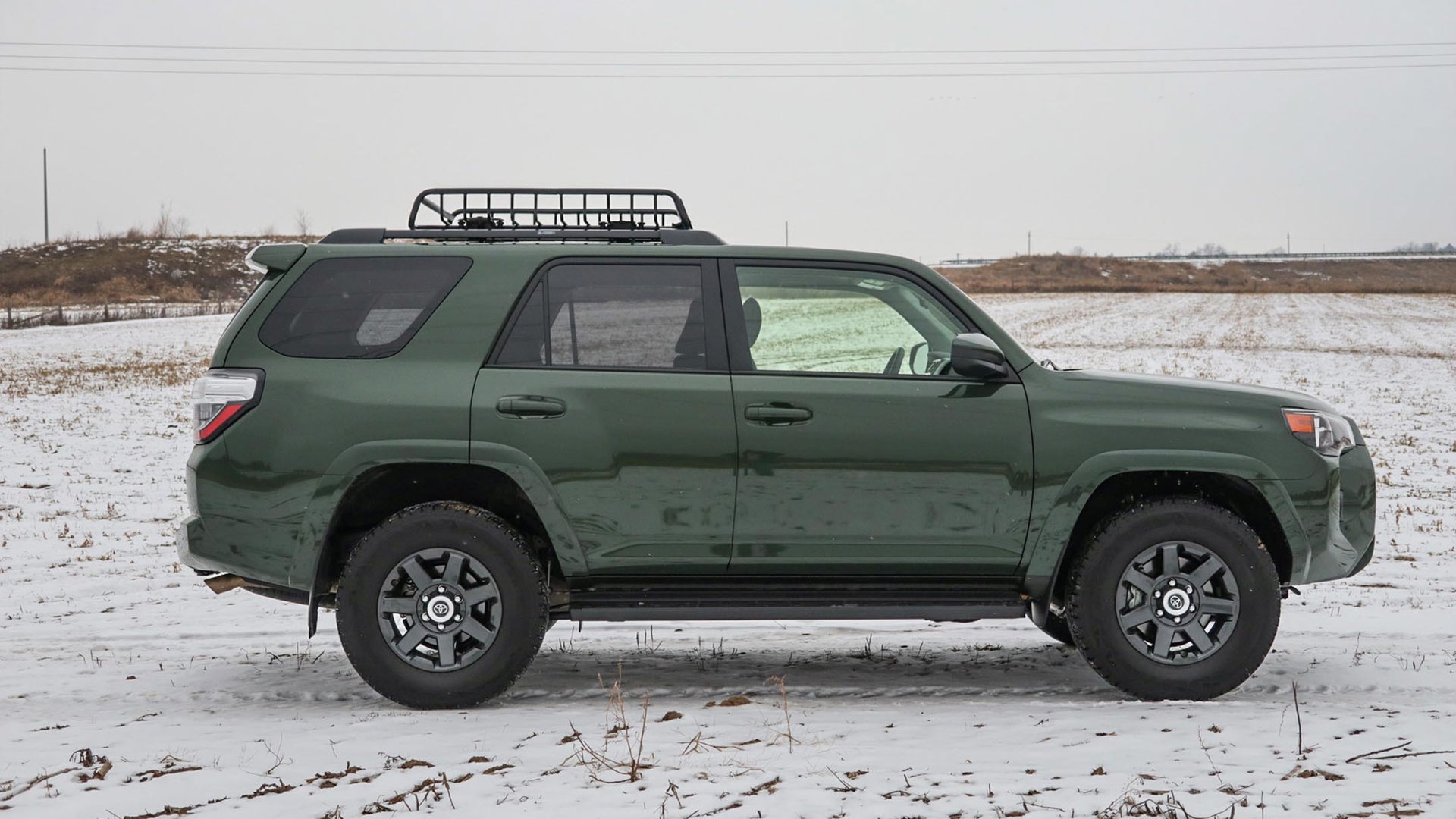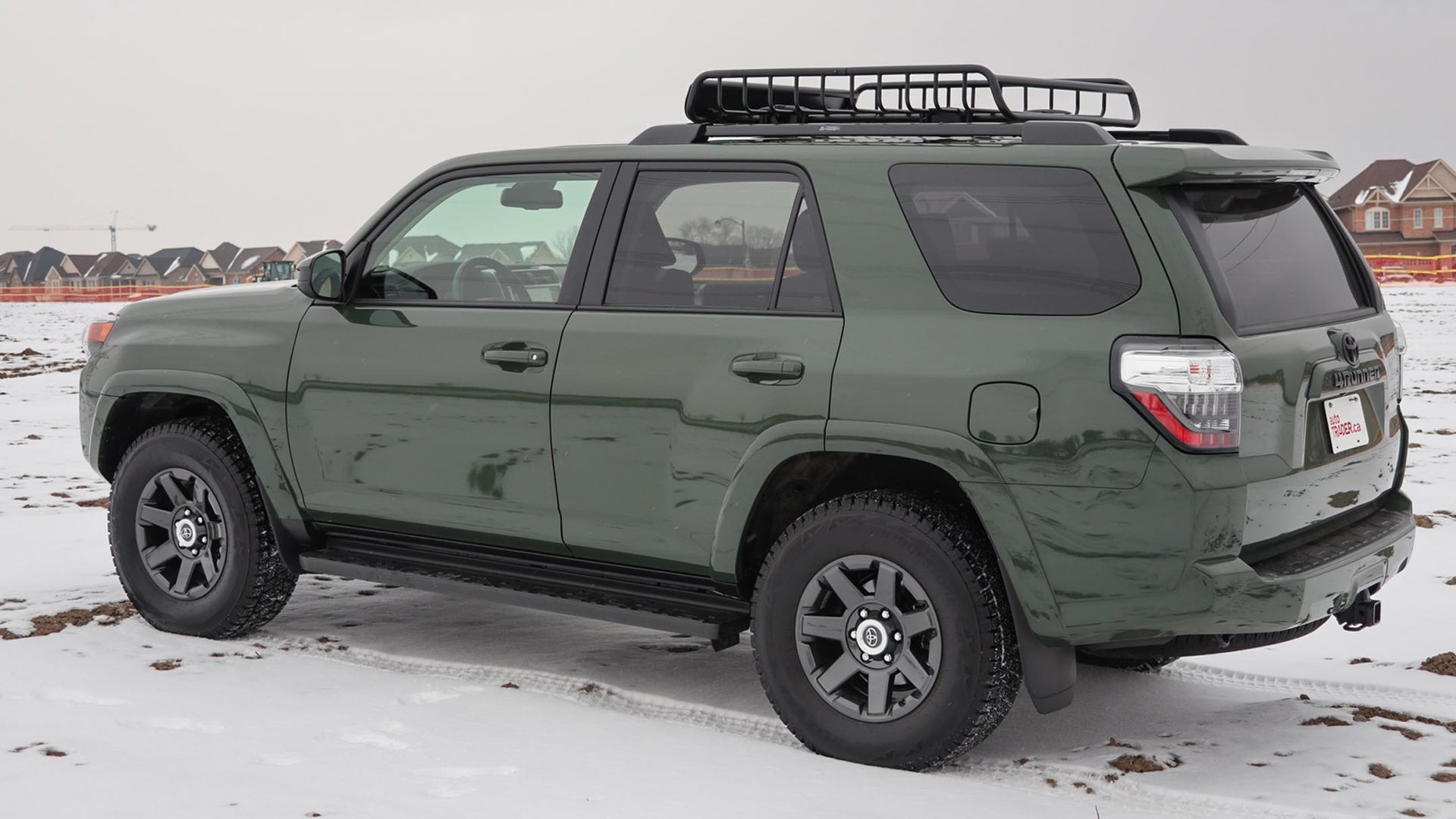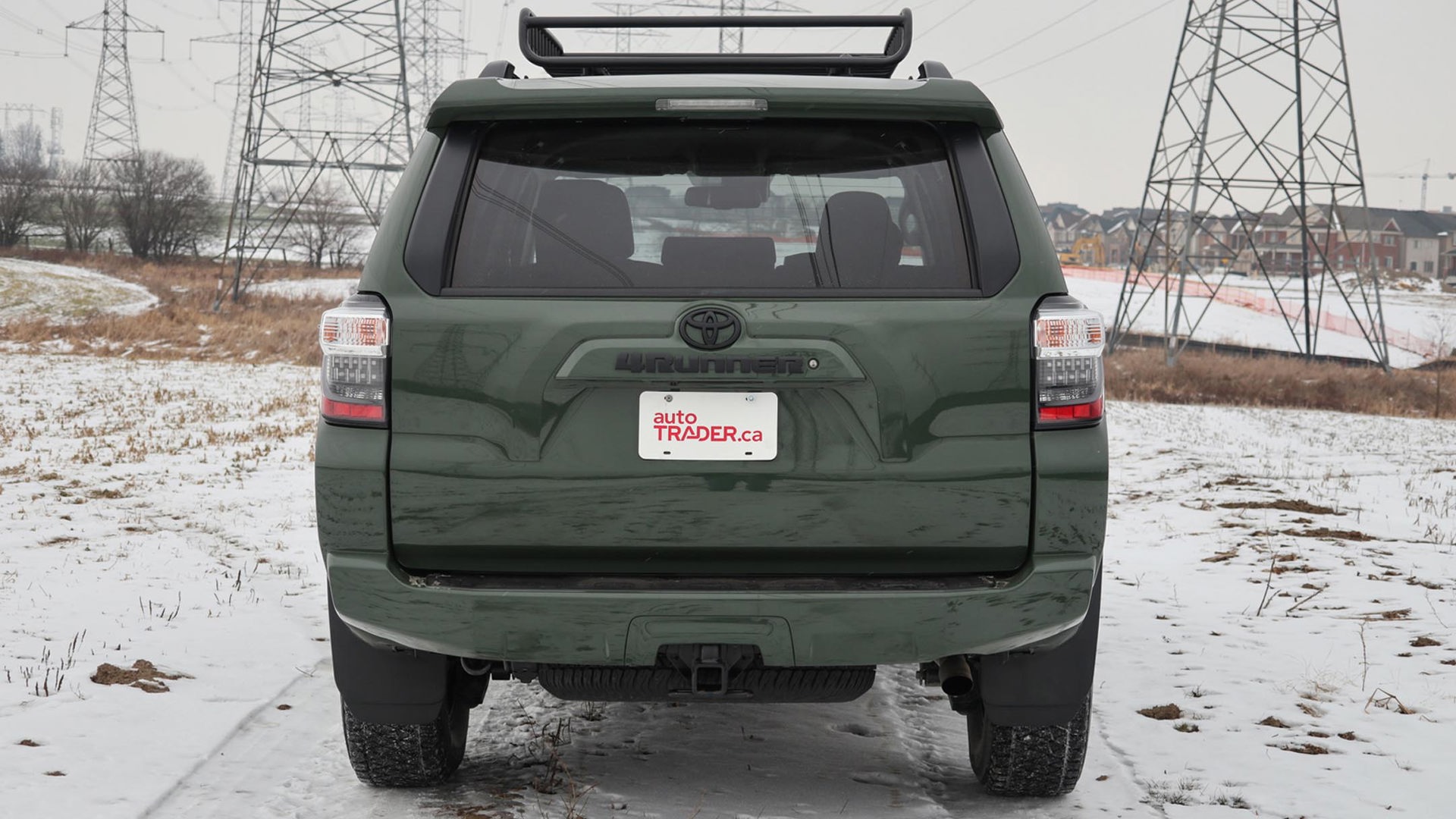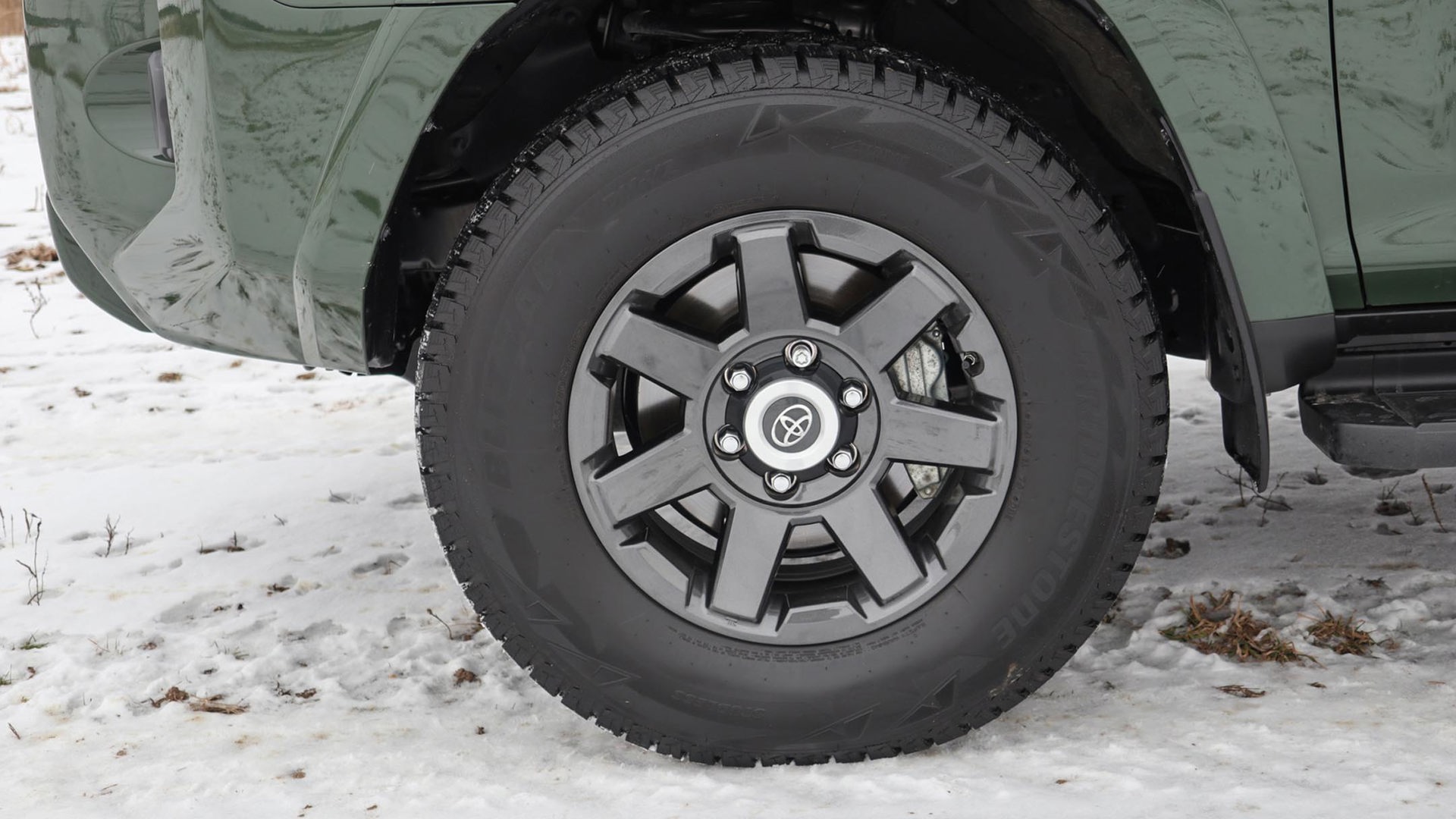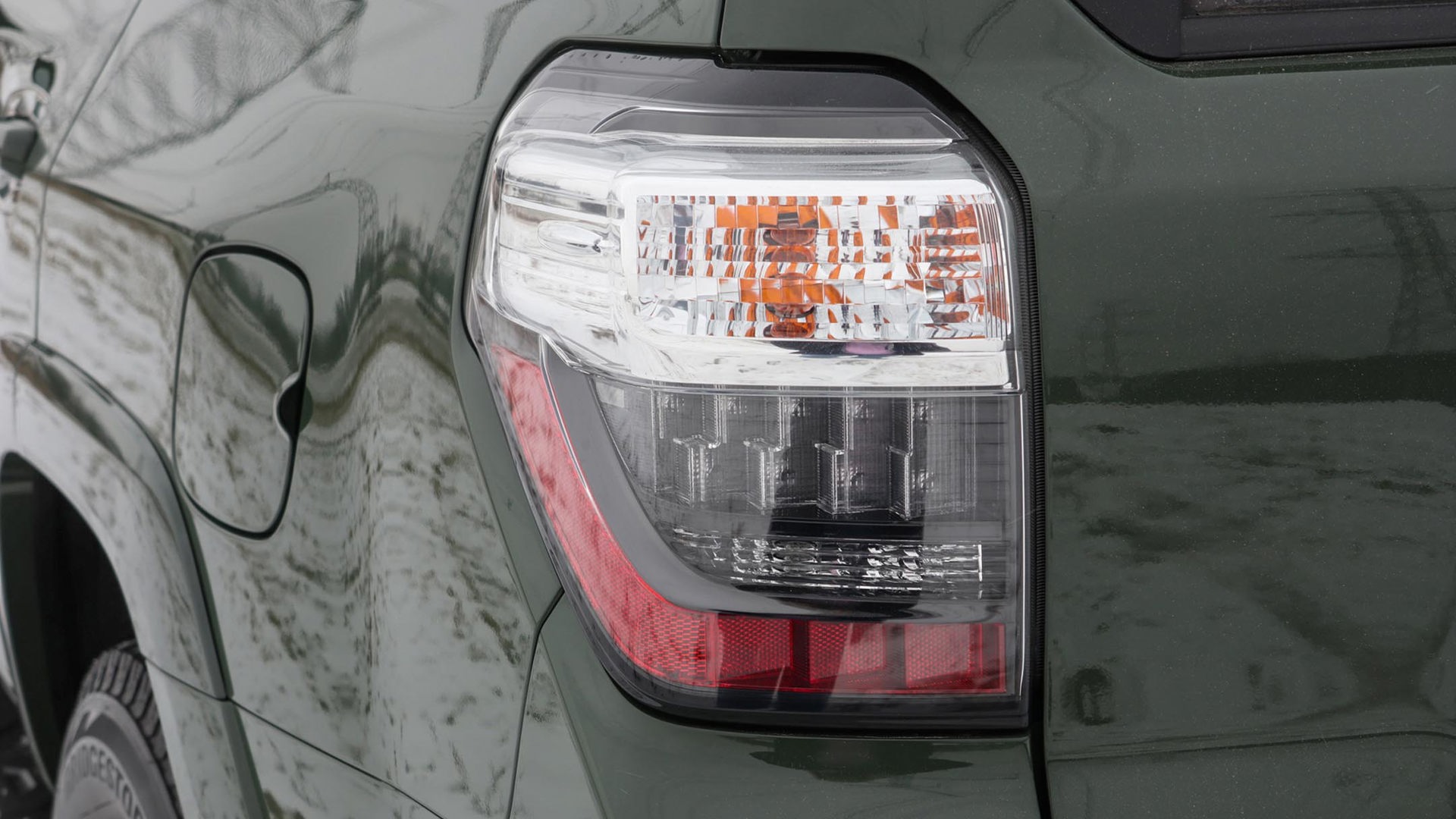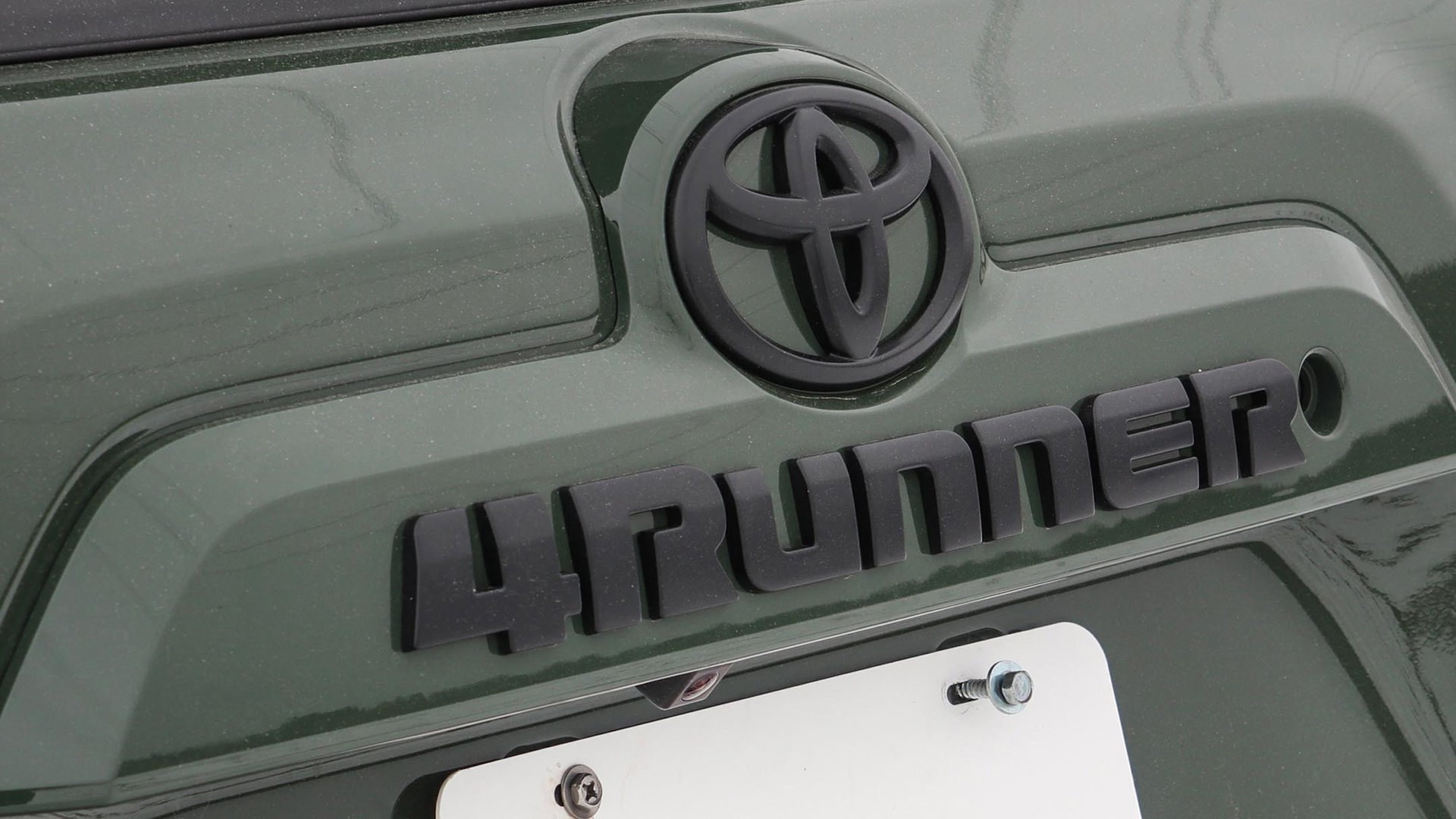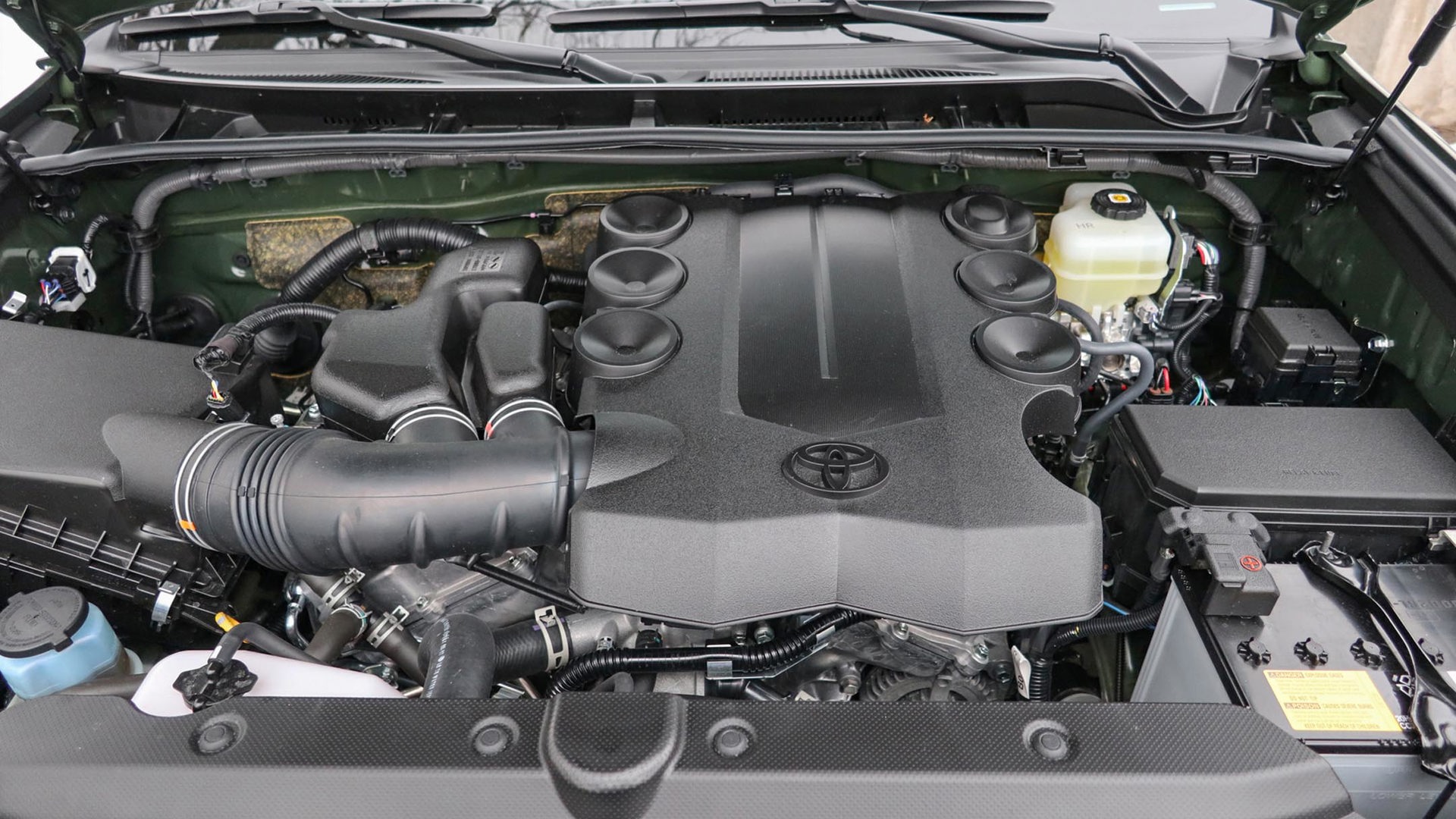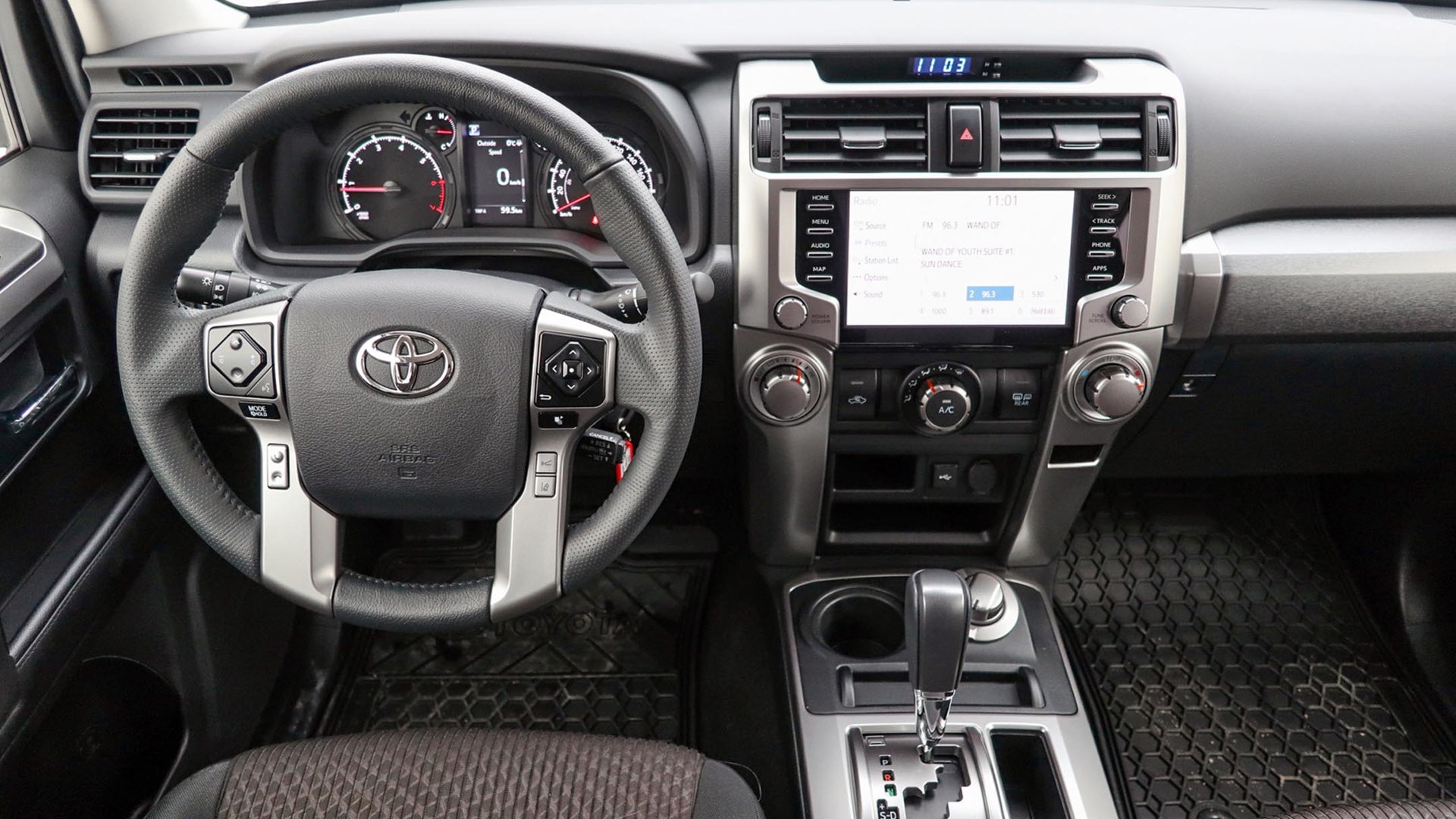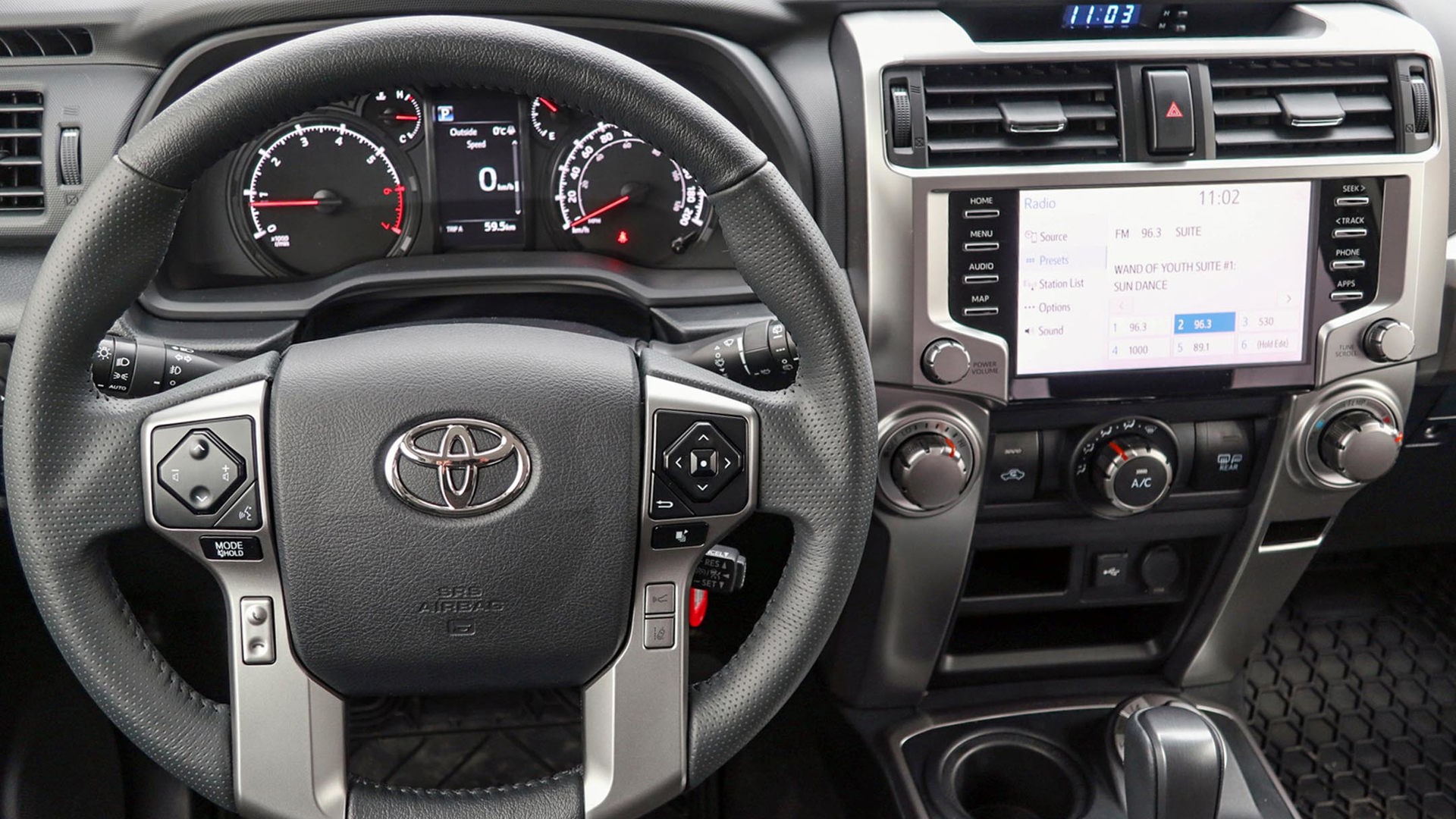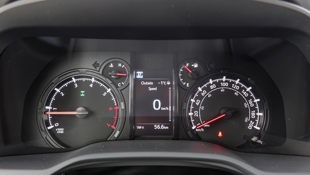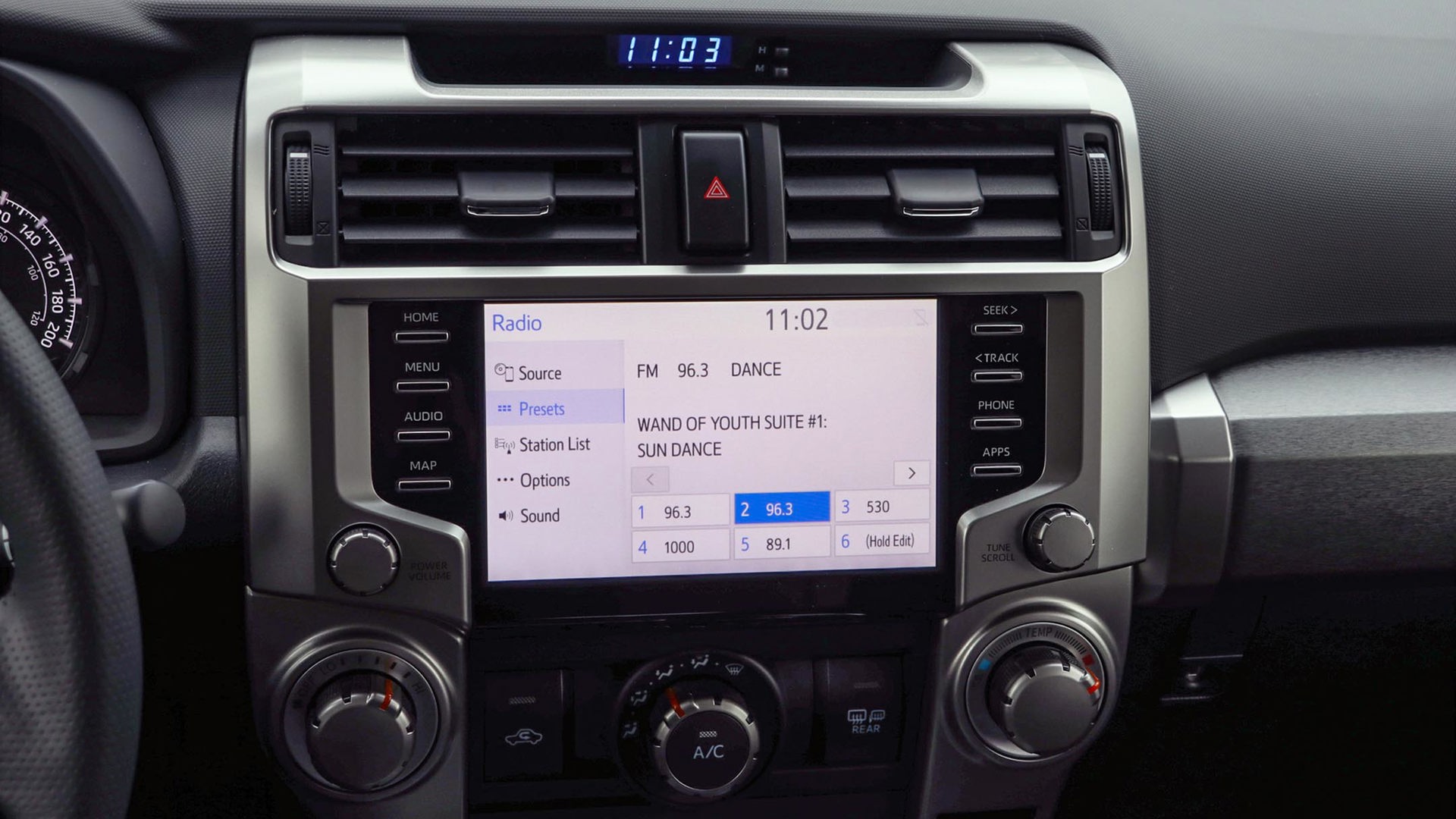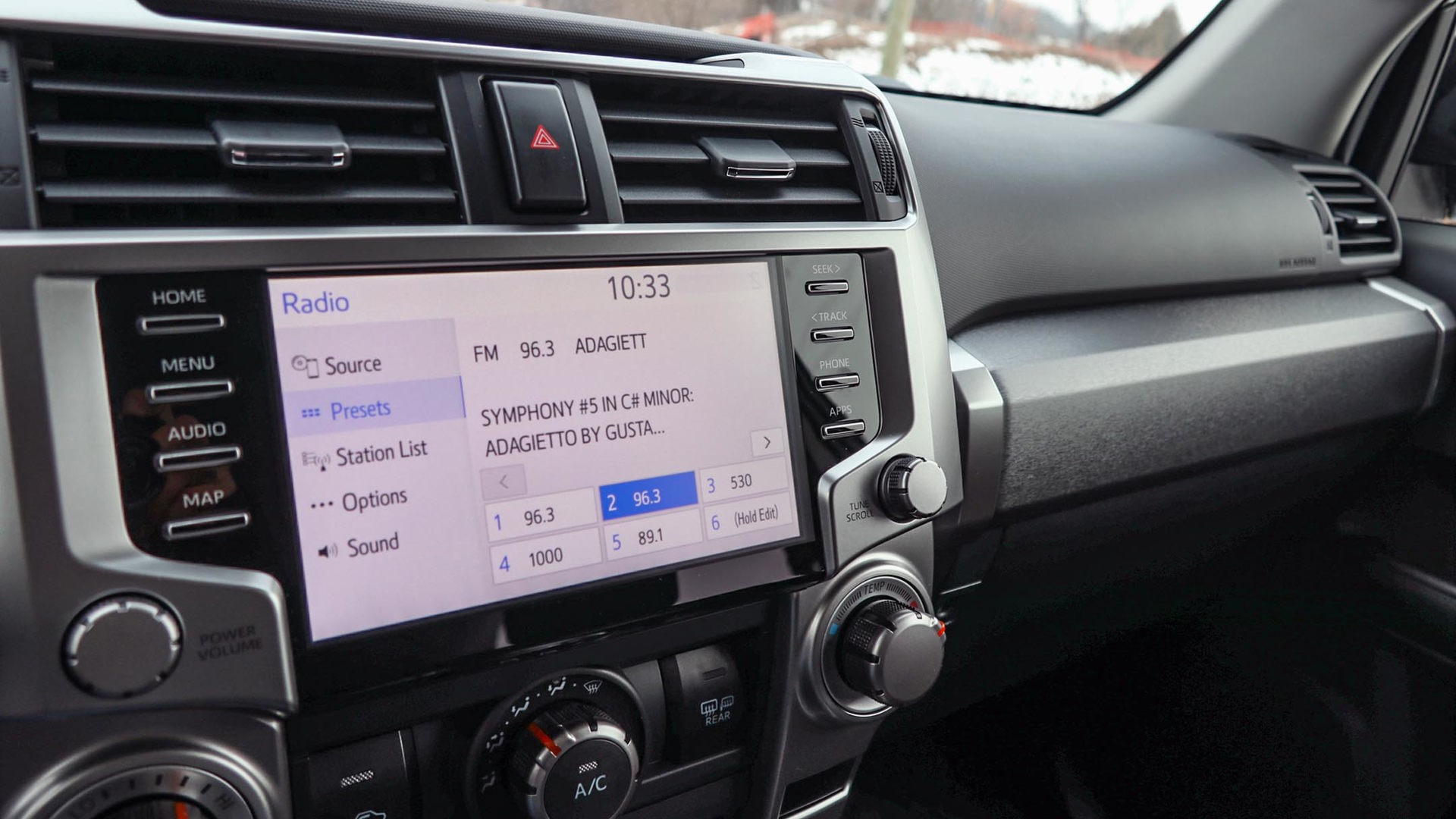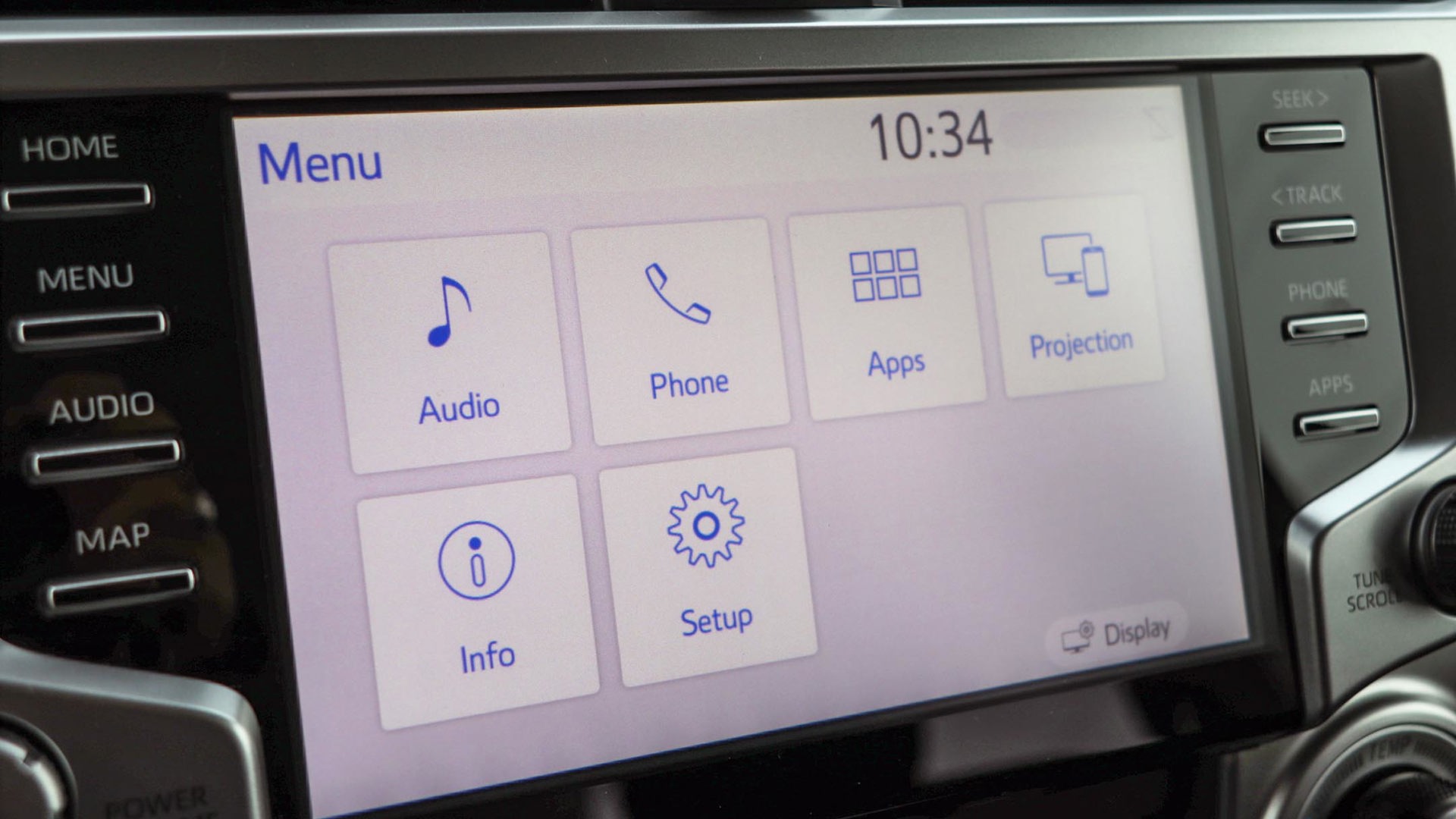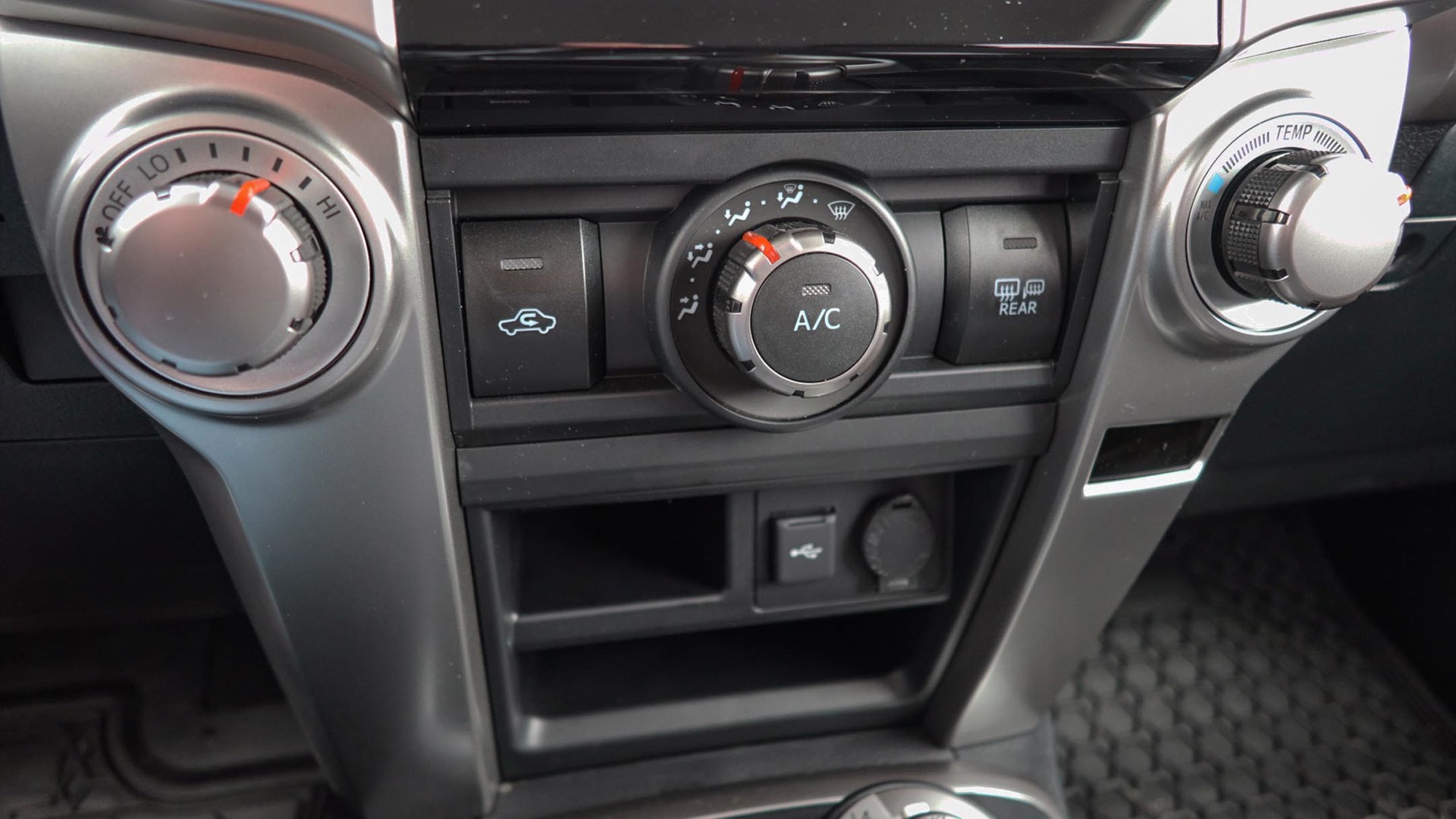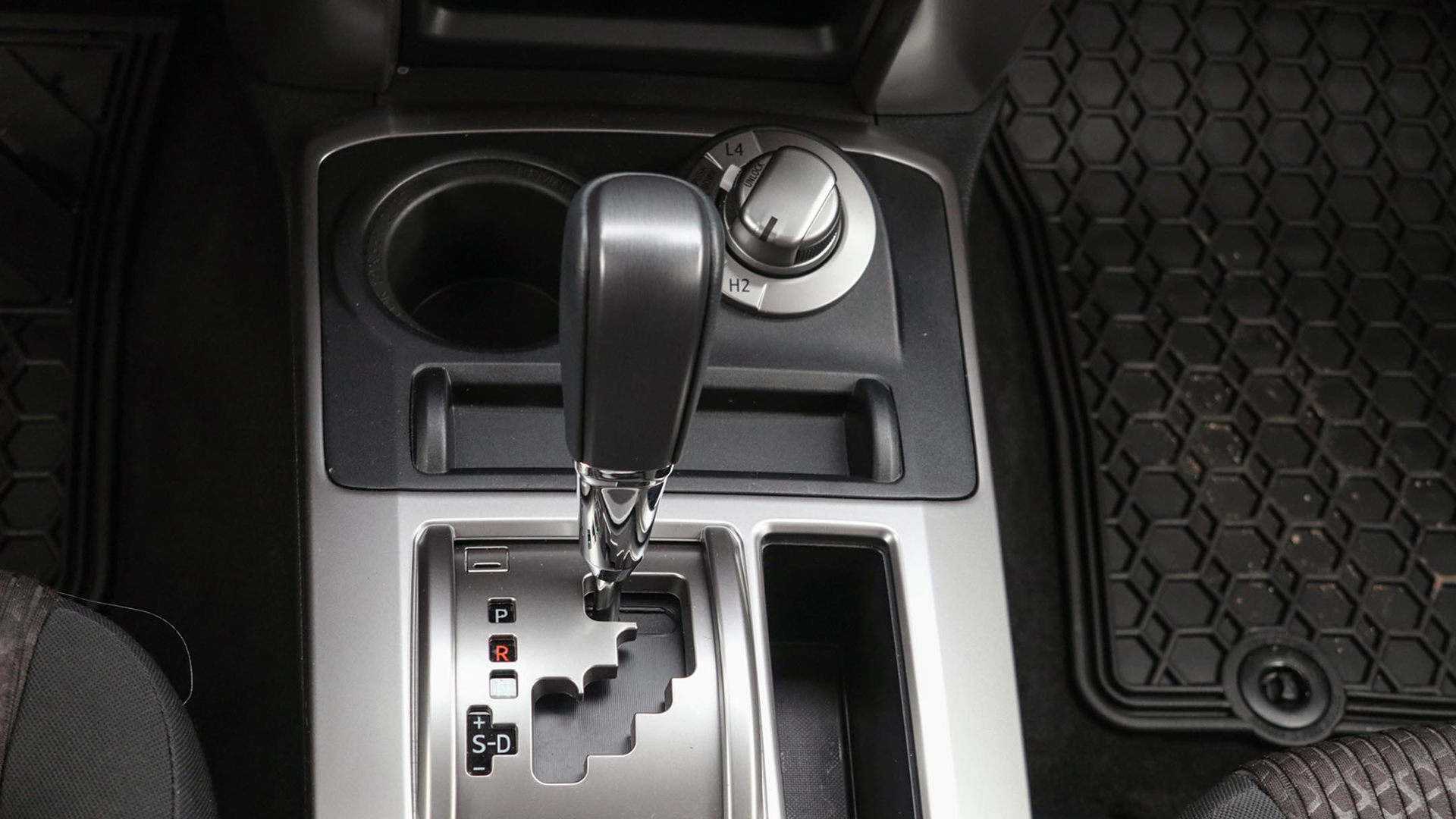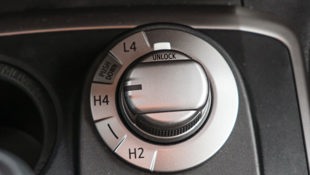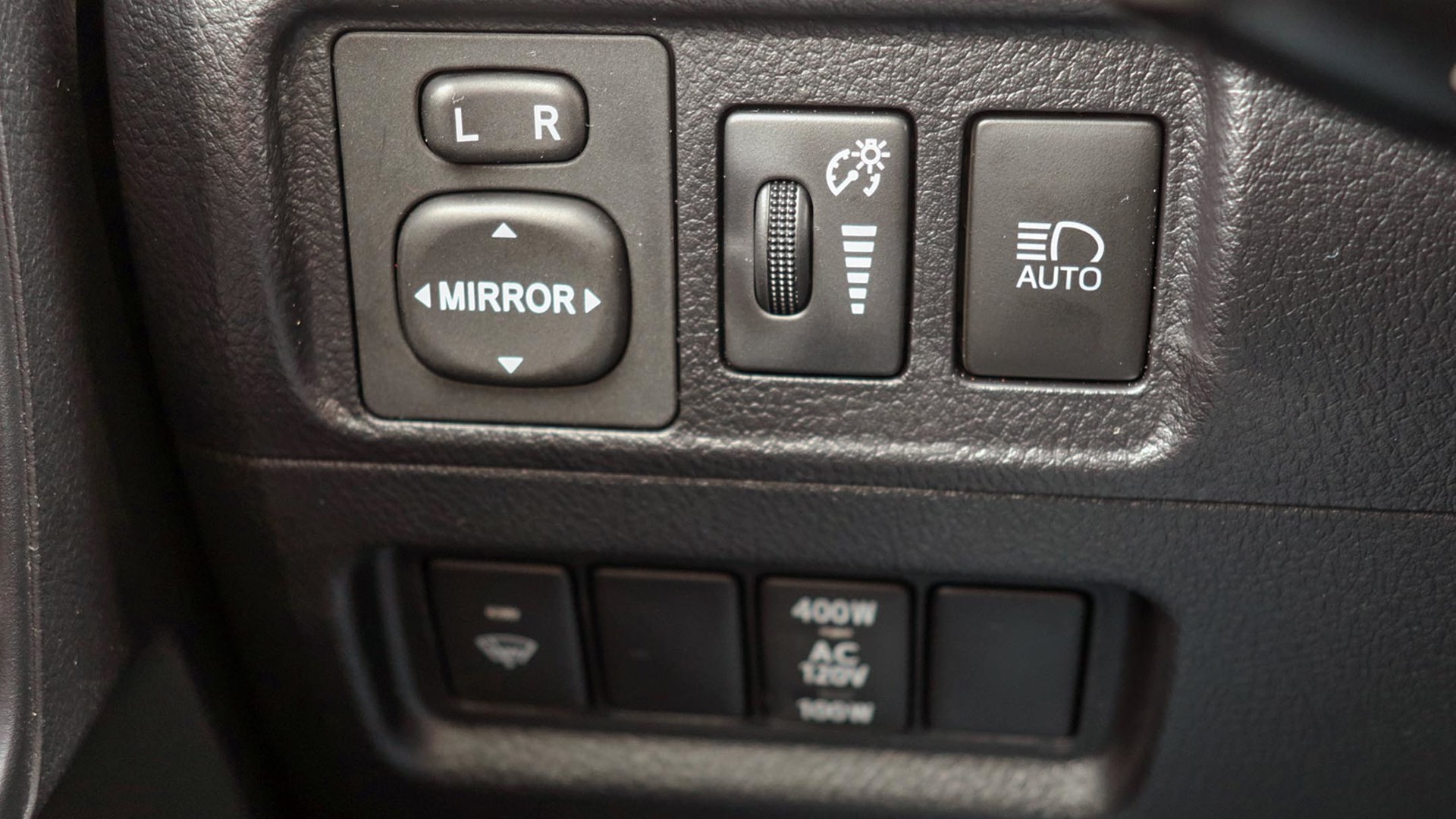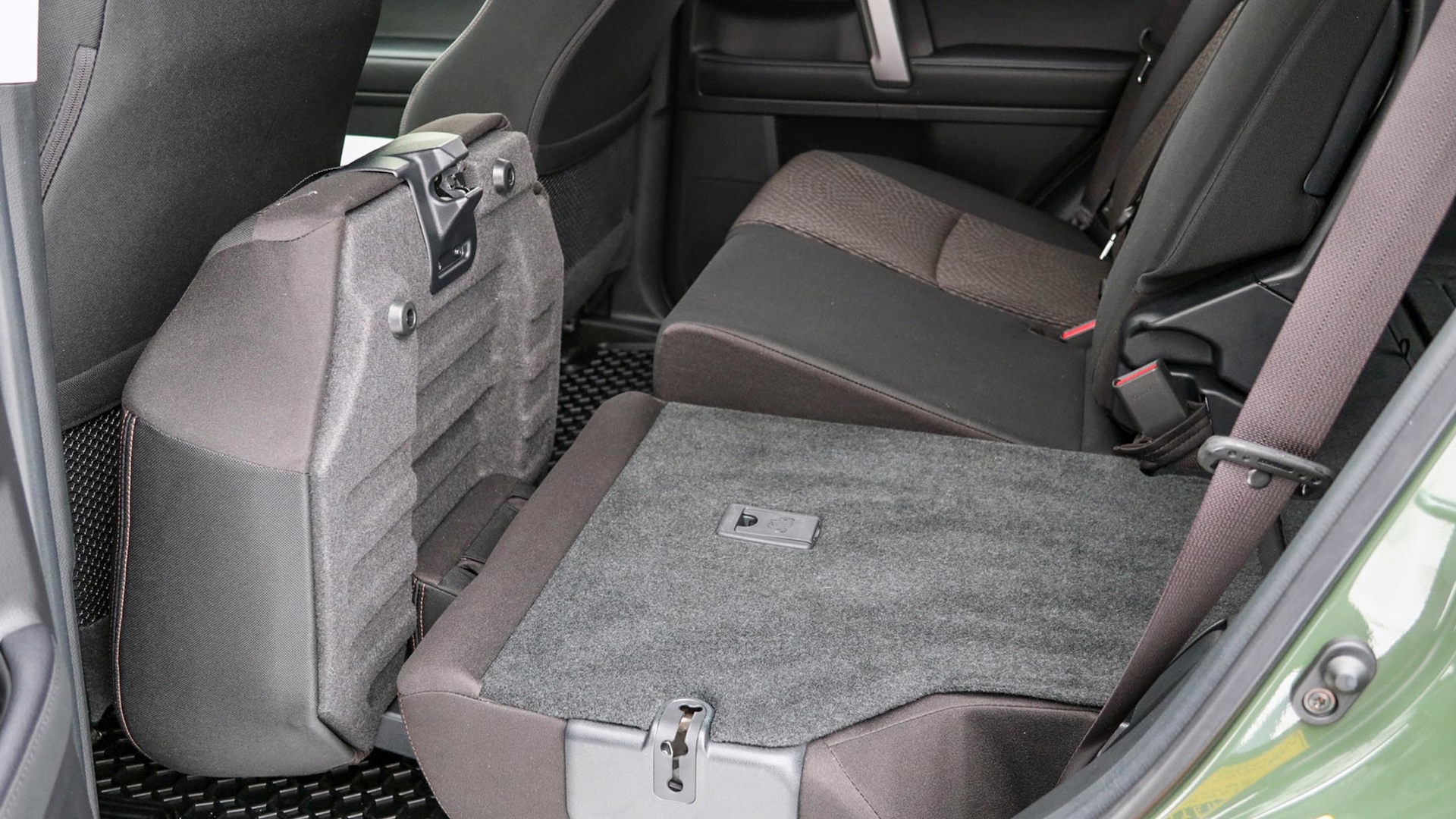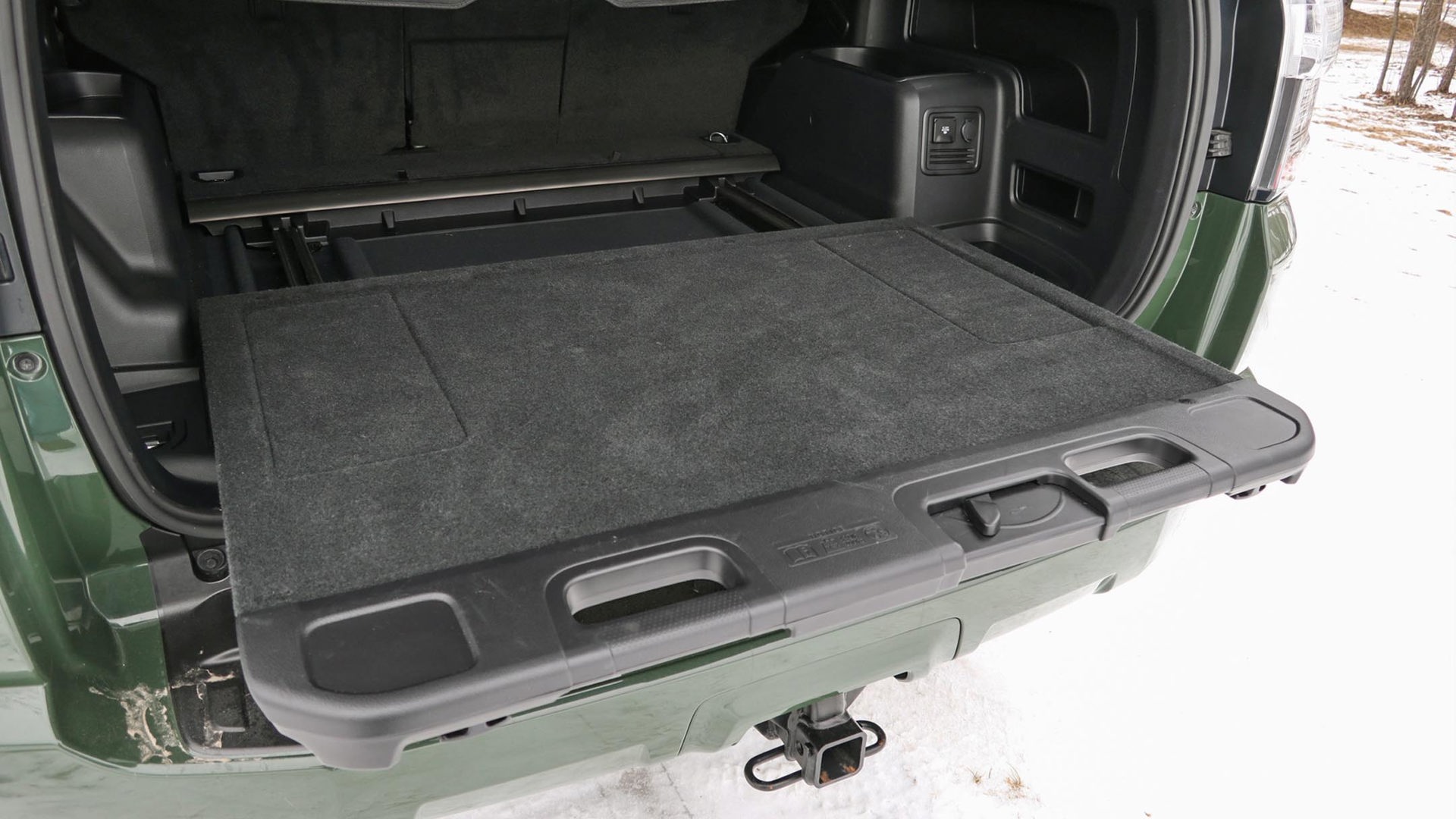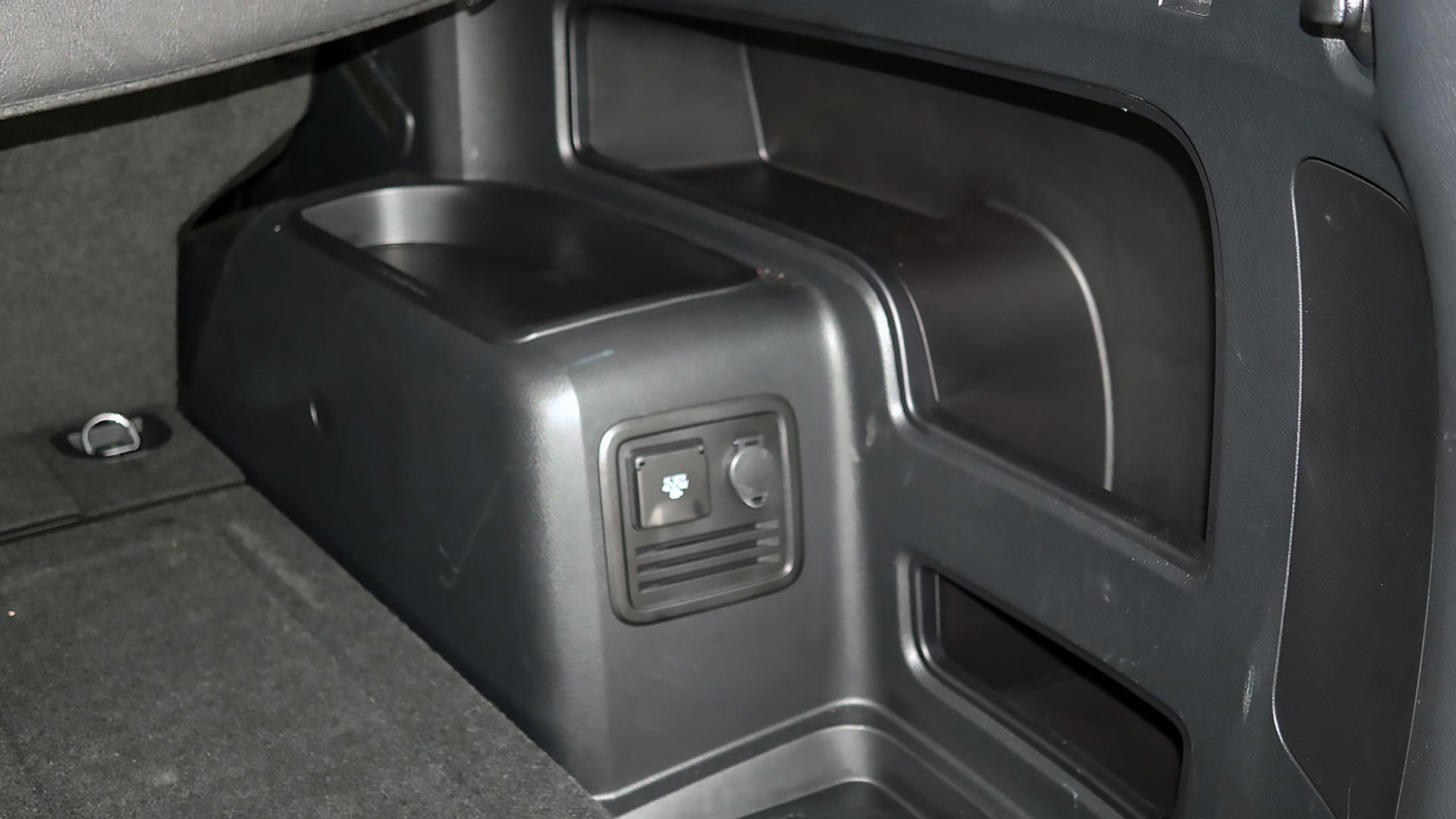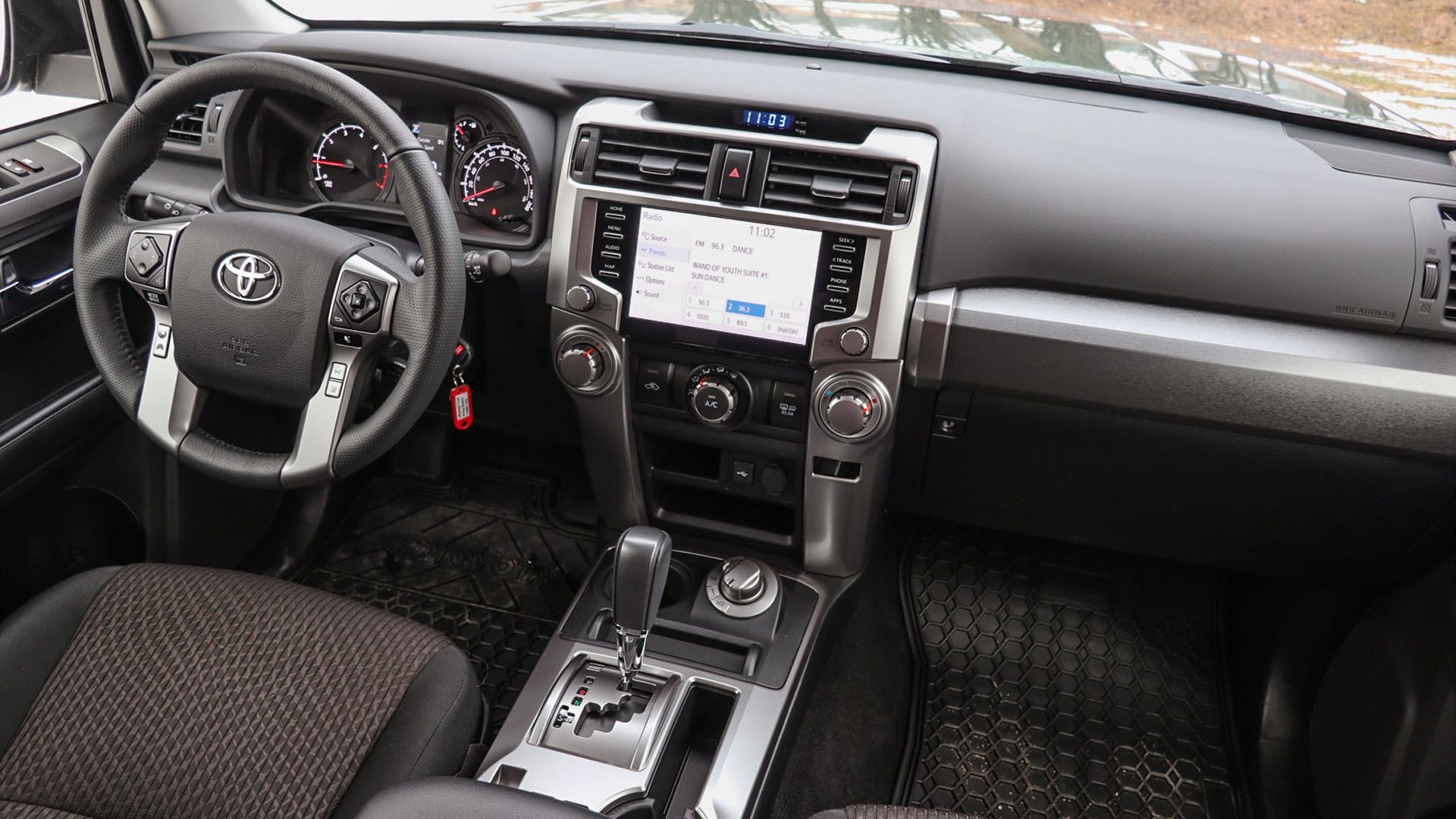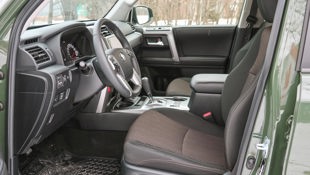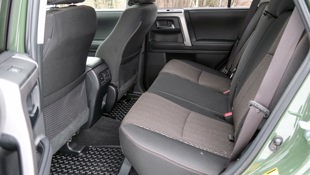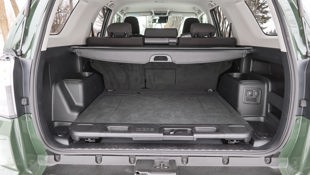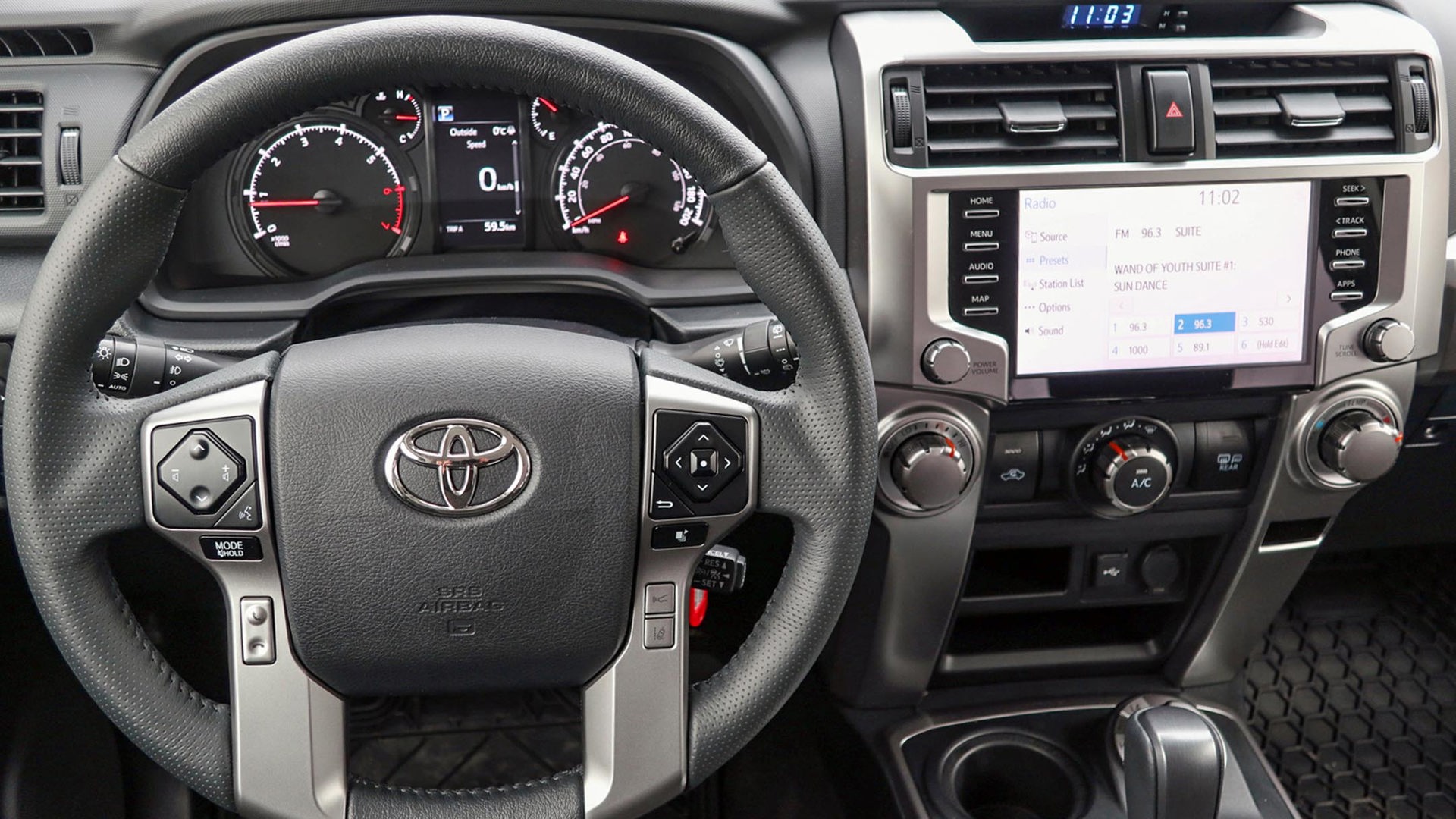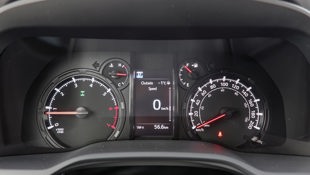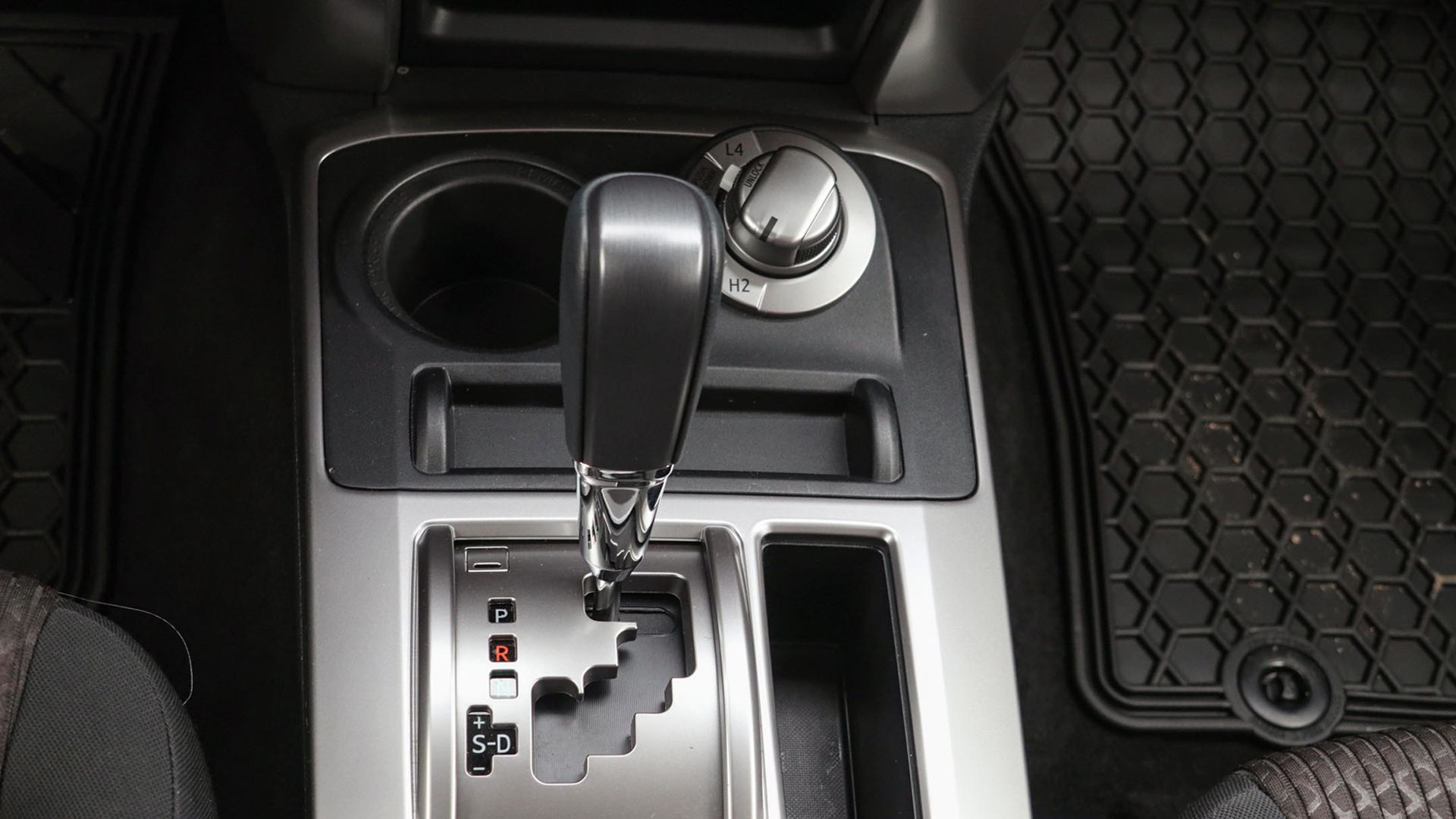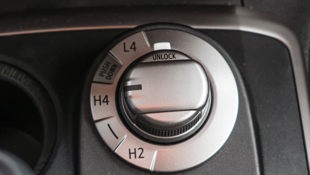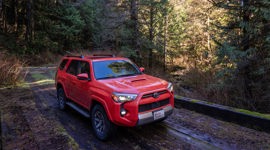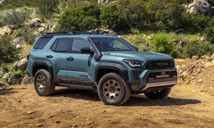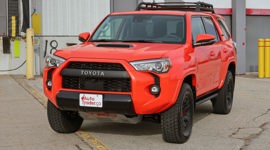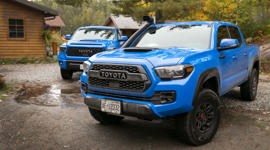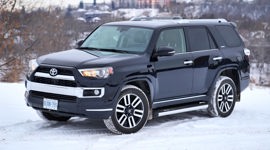 AutoTrader SCORE
AutoTrader SCORE
-
STYLING8/10
-
Safety7/10
-
PRACTICALITY8/10
-
USER-FRIENDLINESS9/10
-
FEATURES8/10
-
POWER8/10
-
COMFORT8/10
-
DRIVING FEEL8/10
-
FUEL ECONOMY7/10
-
VALUE7/10
While most are likely to associate Toyota with hybrids and cars like the Camry, the company is also really good at building vehicles that are capable off-road.
In that corner of the lineup is the 2021 Toyota 4Runner, which is definitely an older design – it’s been in this fifth generation since 2010, and yes, that is 11 years ago – but if you want to go off the beaten path, the 4Runner will get you there and back again.
The 4Runner can be outfitted as the SR5, ranging from $48,910 to the chart-topping TRD Pro at $62,430, and with available seven-passenger seating in some trims. Instead, I had the five-chair base level with the new-for-2021 Trail package, and with no other options available, it rings in at $46,200 before freight and taxes.
Styling: 8/10
The 4Runner looks as rugged as its body-on-frame construction actually is. It’s a box on wheels, which preserves rear-seat headroom and cargo capacity. The Trail package adds the basket-style roof carrier.
Inside, the 4Runner’s styling appears as old as it is, with lots of hard plastic and dated-looking fabrics, but that’s not necessarily bad news overall. It’s all about function, with huge controls and a simple, squared-off dash and centre console adorned with metallic-look accents. Not even the Jeep Wrangler is this basic-looking anymore, but the 4Runner’s message is clear: let’s get this show off the road.
Safety: 7.5/10
The United States National Highway Traffic Safety Administration (NHTSA) gives the 4Runner four out of five stars overall, broken down into four for frontal crash-testing, five for side crash, and three for rollover. The Insurance Institute for Highway Safety (IIHS) gives it the top “Good” rating for almost all tests – moderate front overlap, side, roof strength, and head restraints and seats – but “Marginal” for driver’s side small overlap, and also for child-seat latch ease-of-use.
Toyota puts at least a few higher-tech safety assists systems into all its vehicles as standard equipment, and the 4Runner receives adaptive cruise control, emergency front braking, lane-departure warning, and automatic high-beam headlights, along with the rearview camera that’s mandatory in all new vehicles.
Features: 8/10
As the base model in the 4Runner lineup, the Trail comes with manual climate control and turn-key ignition, which are dual-zone automatic and push-button start in the SR5. That higher-scale model also gives you a sunroof and heated seats missing in the Trail – but in the Trail’s favour, its price tag is $2,710 less, and the only feature I really missed were the heated chairs.
Still, even in the base model, you get LED head- and taillights, an eight-inch centre touchscreen with Apple CarPlay and Android Auto, driver and passenger knee airbags, tire pressure monitoring system, windshield wiper de-icer, the aforementioned safety assist technologies, and power-adjustable seats. The Trail package also adds the roof basket, colour-keyed cooler, and my favourite item, a sliding rear cargo tray.
User Friendliness: 9/10
The benefit to the 4Runner’s ultra-simple design is that everything is dead-nuts easy to use. Adjust the temperature or the stereo volume, and there are big dials to spin. The touchscreen can be slow when it’s cold, but its icons and menus are intuitive, and there are hard buttons to pull up the screen you want to use. The design’s advanced age is evident in that there’s no three-blink lane-change tap on the turn-signal switch. Toyota was one of the last automakers to adopt this handy little feature, and the 4Runner still doesn’t have it.
The 4Runner isn’t ridiculously oversized, and even with its off-road ground clearance it’s easy to get in and out of, especially since the running boards are wide enough for one’s foot but not so much that they’re tough to step over. The truck’s square shape makes for excellent visibility all around. About the only negative is the folding rear seats, which are definitely an old design, and you must flip up the cushions forward before you can fold the seatbacks down flat. It’s not a difficult step but an extra one, and once the cushion’s flipped up, you lose that floor space for extra cargo, plus the front seat’s rearward travel is limited.
Practicality: 8.5/10
I like that the 4Runner isn’t needlessly overbulked. It’s easy to get in and out, especially with those well-sized running boards, and with the wide-opening doors.
The Trail’s slide-out cargo tray chews up some of the cargo compartment’s height and 25 L of its overall volume, but more than makes up for it with its practicality, especially for shorter folks like me who can’t always reach all the way in. For the vertically challenged who might also find it tough to reach the open tailgate to close it, there’s a hanging pull-strap to make it easier. Towing capacity is 2,268 kg (5,000 lb).
Comfort: 8/10
The 4Runner offers lots of legroom – in my five-passenger tester, at least; those in the third row of a seven-seater will beg to differ – and with headroom for all but the very tallest occupants. The seats are fairly supportive but the cushions got a bit hard on longer drives.
While other 4Runner trims have faux-leather seats, the Trail trim uses fabric chairs, and they’re not heated. That’s something I really missed, especially after photographing my ride on top of a hill on a cold and windy day. A heated steering wheel would be nice, too, but none of the 4Runner packages offer it.
Power: 8/10
The single engine choice is a 4.0L V6 that makes 270 hp and 278 lb-ft of torque. Those aren’t huge numbers compared to many turbocharged four-cylinders some automakers are putting in their sport-utes, but I prefer the simplicity of a naturally aspirated engine, especially if I’m planning to keep a vehicle for a long time. The five-speed automatic transmission is a throwback in this era of multi-gear units that can go as high as 10 speeds, but it gets the job done.
The 4Runner is heavy, and acceleration is linear but not quick – but then, this isn’t a sports car. You have to approach it for what it is: a tough grunter that can tackle tough trails, while still getting you to where you have to go with a surprisingly smooth and very composed ride on pavement.
Driving Feel: 8/10
As mentioned above, the 4Runner’s suspension has decent ride quality on pavement, without the bounciness or constant undulation that many off-roaders can exhibit on asphalt. It has a very tight turning circle, and along with that excellent visibility from the driver’s seat, it’s easy to move it around in tight parking lots. On the downside, the steering can feel vague and lifeless.
The 4Runner is all about off-road goodness, and it delivers on that, effortlessly tackling bumps and dips without bumping and dipping its occupants too much. The Trail’s two-speed transfer case offers high- and low-range gearing, both of which should be used only on loose or slippery surfaces, and these are activated with a dial. The Trail will get you through most of the tough stuff, but should you want more, higher trim levels add a terrain mode selector that optimizes the system for conditions such as sand or rocks; crawl control, which works as very-low-speed cruise control on the trail; a locking rear differential; and full-time four-wheel drive, which can be used on pavement.
Fuel Economy: 7/10
Natural Resources Canada (NRCan) officially rates the 4Runner at 14.8 L/100 km in the city; 12.5 on the highway; and combined at 13.8 L/100 km. In my week with it, I averaged 15.4 L/100 km.
The 4Runner’s ancient engine isn’t equipped with numerous fuel-saving technologies as others are, and those numbers are considered thirsty. But this is also a relatively rare beast these days: a midsize body-on-frame sport-ute, and so it’s hard to compare head-to-head with unibody SUVs like Ford’s Explorer or Honda’s Passport. That 13.8 L/100 km combined rating is very close to the official numbers for similarly configured models like the V6-powered Jeep Grand Cherokee and Dodge Durango.
Value: 7.5/10
That small pool of similarly sized competitors also makes it tough to cross-shop precisely by price. The 4Runner Trail rings in at $46,200. The least-expensive Dodge Durango is close to $48,000, while Jeep’s Grand Cherokee is near $48,700. You’ll save some cash looking at the base versions of the Ford Explorer at $45,549; Honda’s Pilot at $43,305 and Passport at $42,605; and Nissan’s Pathfinder at $36,698, but none of them have that true off-road setup.
Overall, I wouldn’t call the 4Runner inexpensive, but I would say it’s intelligently priced. It’s dated and simplistic, but it’s also very capable and honest. Other than for the heated seats, I don’t even think I’d move up to the SR5.
The Verdict
Jeep may be the first name on most lips for off-road ability, but there are other manufacturers that do a very good job away from the pavement, and Toyota is one of them. The 4Runner blends its ruggedness with a smooth on-road ride, useful size, lots of cargo capacity, and simple operation. If you want the best of both worlds, take this one for a spin.
| Engine Displacement | 4.0L |
|---|---|
| Engine Cylinders | V6 |
| Peak Horsepower | 270 hp @ 5,600 rpm |
| Peak Torque | 278 lb-ft @ 4,400 rpm |
| Fuel Economy | 14.8/12.5/13.8 L/100 km cty/hwy/cmb |
| Cargo Space | 1,311 L seats up / 2,514 L seats down with cargo slider |
| Model Tested | 2021 Toyota 4Runner Trail |
| Base Price | $46,200 |
| A/C Tax | $100 |
| Destination Fee | $1,840 |
| Price as Tested | $48,140 |
|
Optional Equipment
None
|
|
